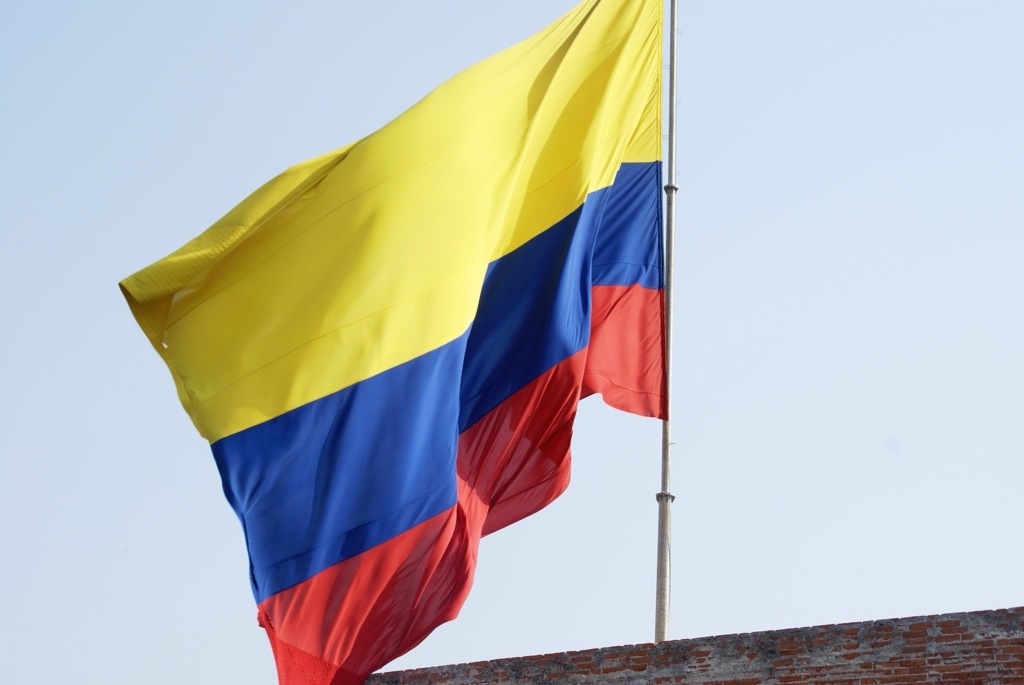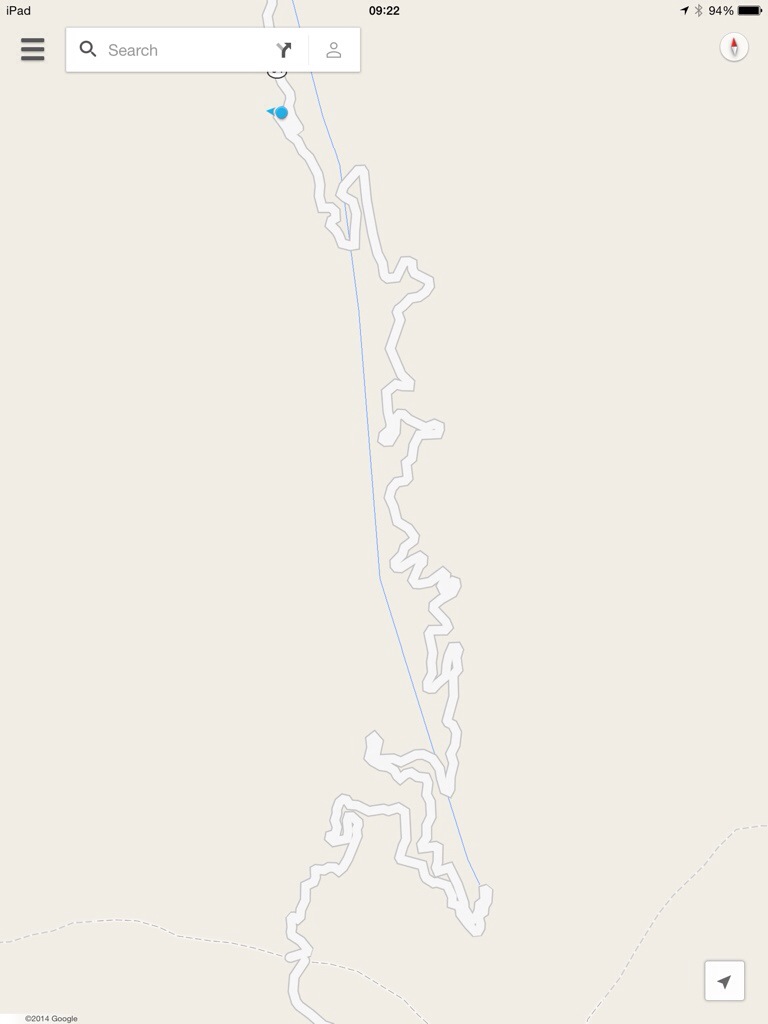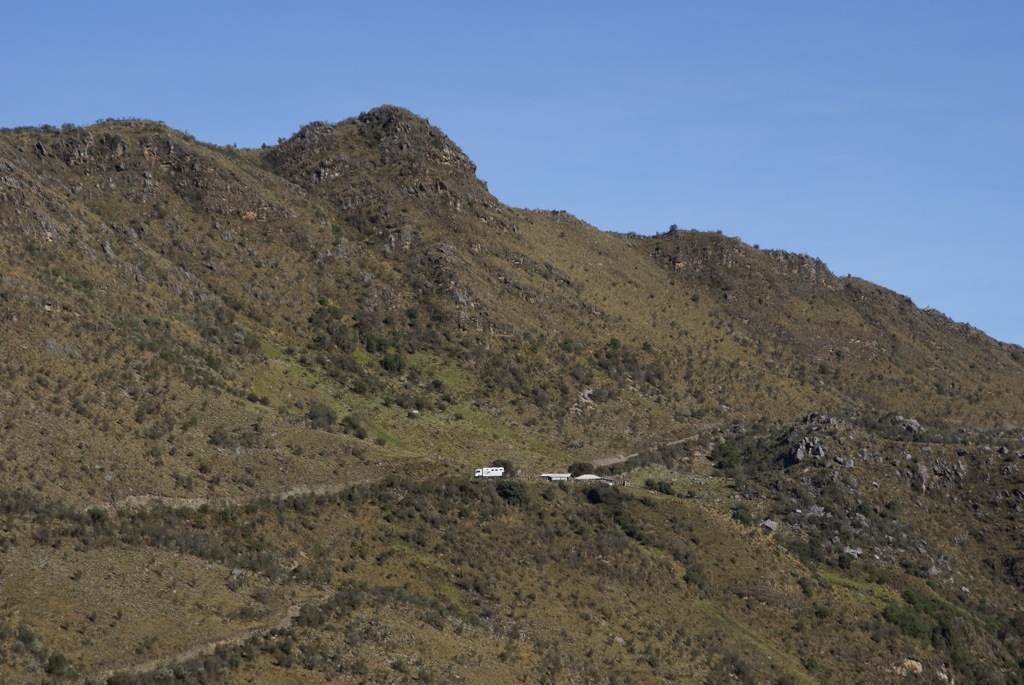The border crossing between Colombia and Ecuador was a comparative breeze. Our main difficulty was that we were done too quickly to buy insurance, the office didn't open till 9 am and we were done and dusted by 8, thanks to Steve's hyper efficiency.
Our first stop, as both fuel tanks were intentionally on red, was to fill up with diesel. At US$1.02 a gallon (about £0.17 a litre). It cost us $65 (under £40) to fill a tank, compared with about £300 in Europe. Steve was a happy man!
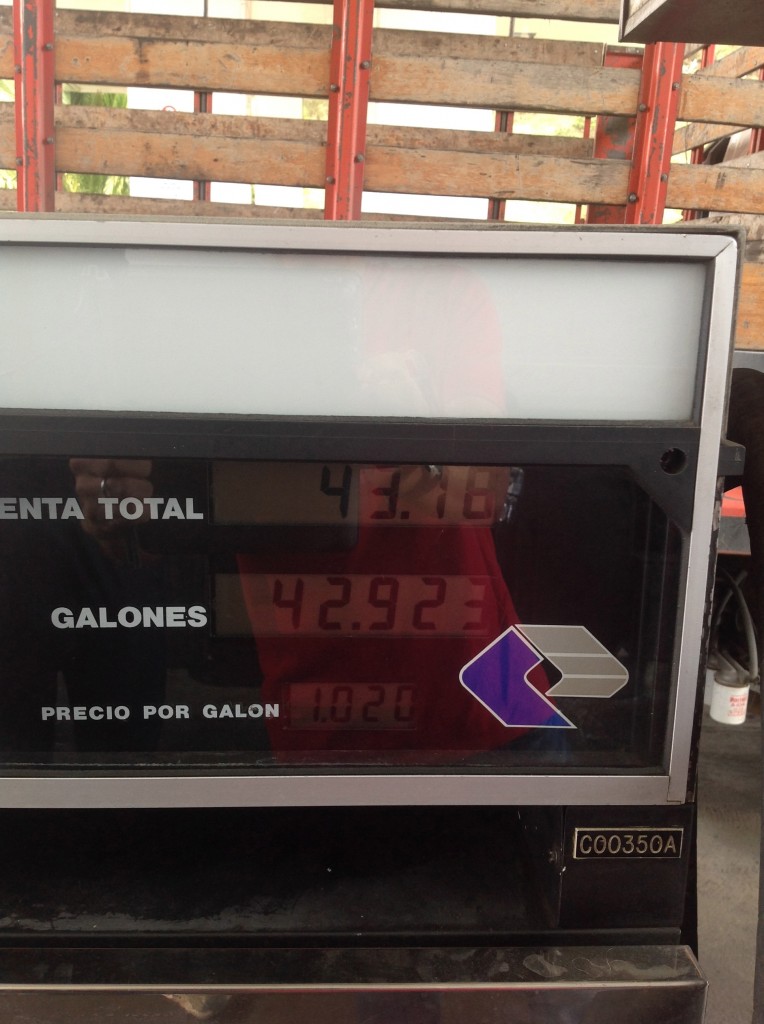
The Andean town of Otavalo is known for its Saturday market where people come from far and wide from across the mountains to trade. Staying in a hostel car park a few kilometres above town, we made the most of the glorious views. They had to be viewed in quick snippets as the clouds only lifted for a short time, the rainy season is definitely upon us. Friday saw us hiking through steep farmlands filled with maize, cows and lots of mud to an overflowing waterfall. We got lost passing through small farmyards and fields where every inch of land, however steep the slope.
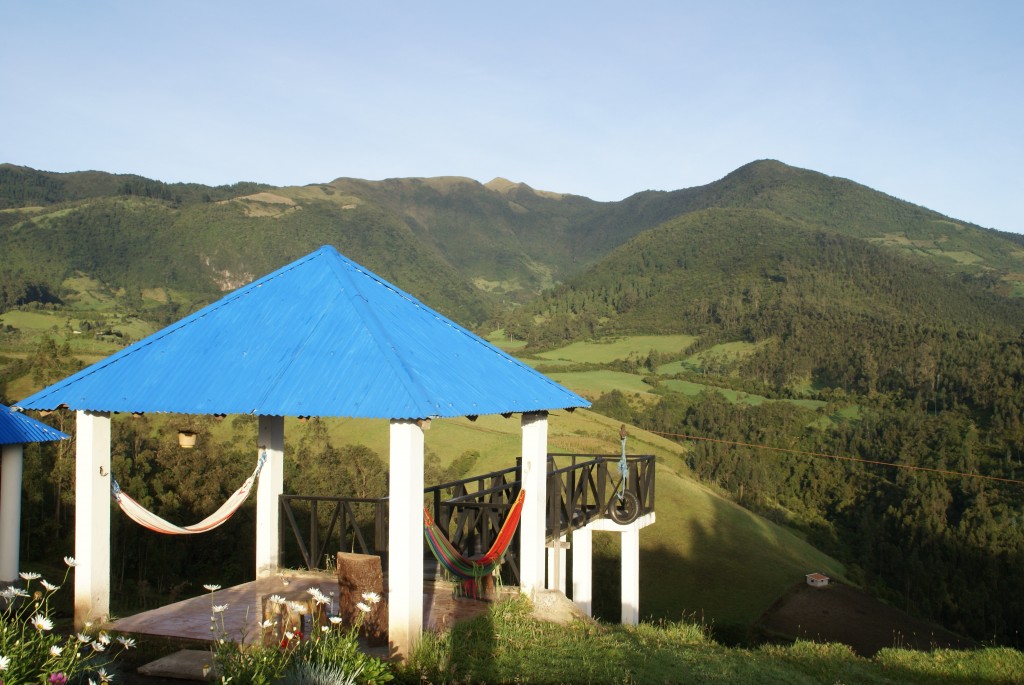
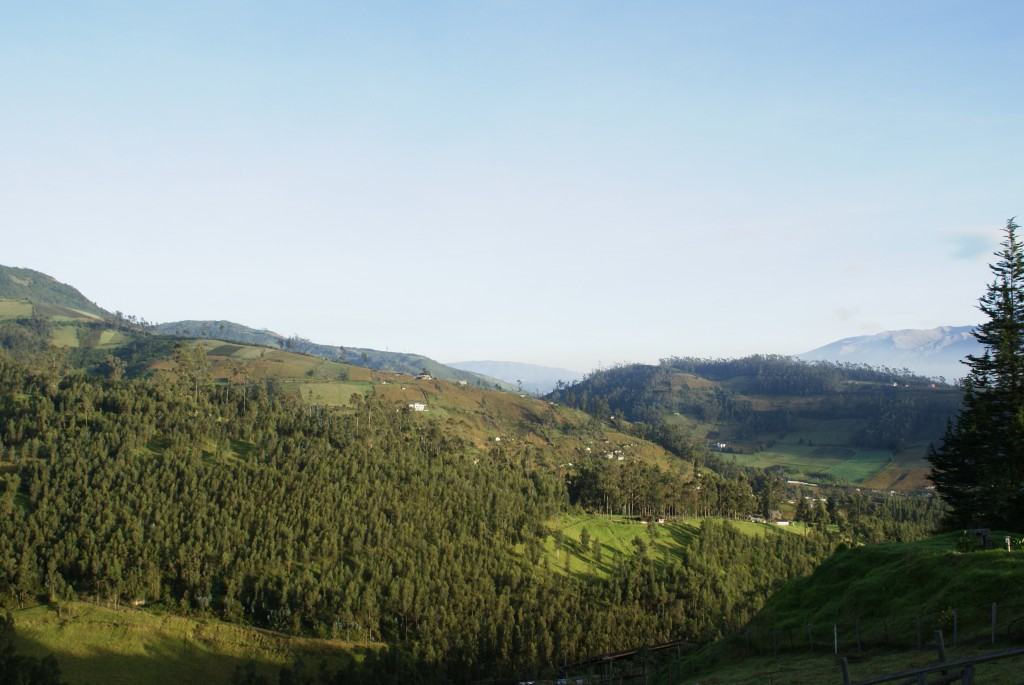
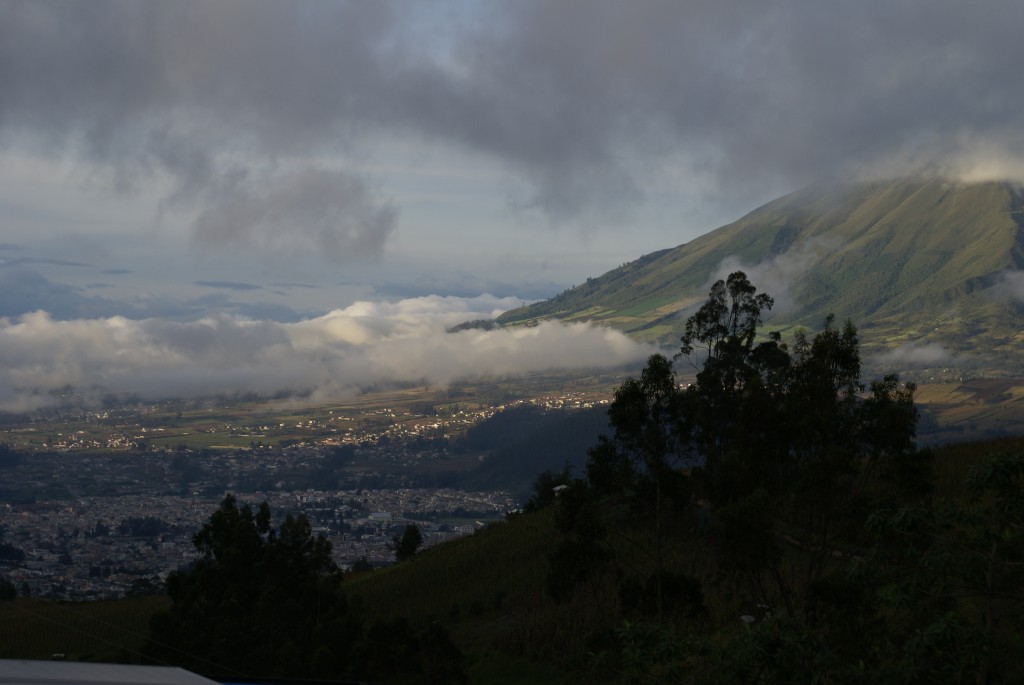
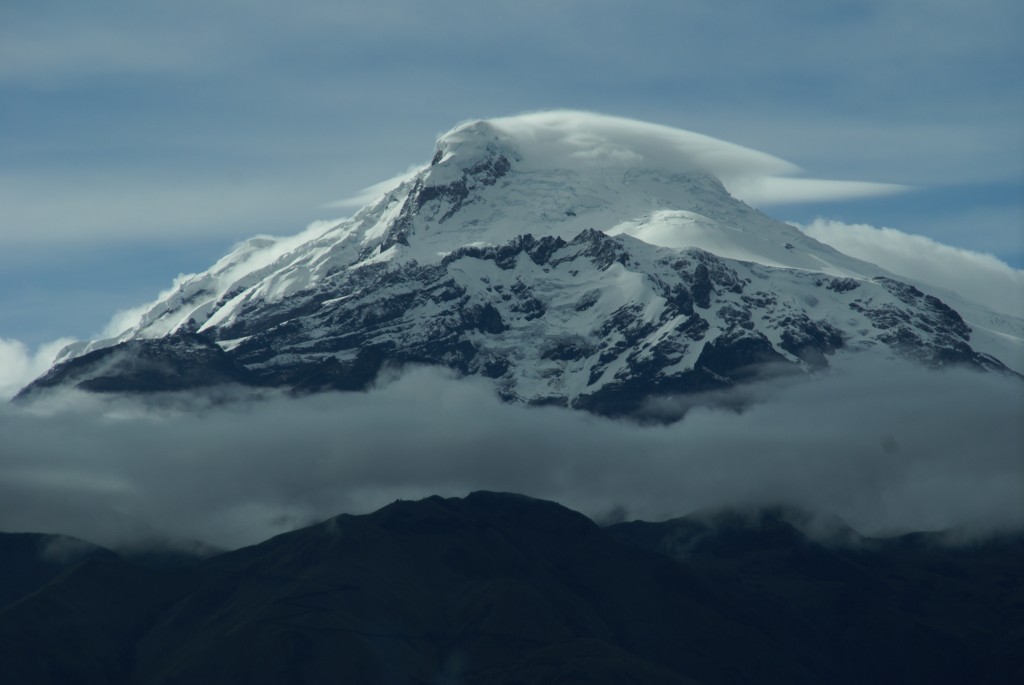
We awoke early on Saturday morning and headed down to town to the livestock market first. It was an absolute feast for the eyes, it was packed with people wearing their local costumes. There were ladies with white lacy blouses embroidered with multicoloured flowers. In the cool morning climes this was covered by a navy shawl knotted over one shoulder. Ropes of gold beads glinted at their necks and stings of coral beads could be glimpsed on their wrists. The skirts were cut long and with slits either side, made of dark material a white petticoat could be seen as they stepped out with their goods. The temperature fluctuations are extreme at this altitude on the equator. Shawls that had been earlier wrapped around bodies were now neatly folded and balanced on the top of the head to protect from the sun's harsh rays. On the feet both men and women wore canvas sandals tied at the ankle. Many of the men wore their hair long in a smooth jet black plait down their back. Their white cotton shirts and trousers covered by dark ponchos. Another group of women from a different area wore dark homburg hats, much like the one my Grandpa used to wear, but with a jaunty peacock feather tucked in the band. Their skirts were more colourful, knee length and densely folded.
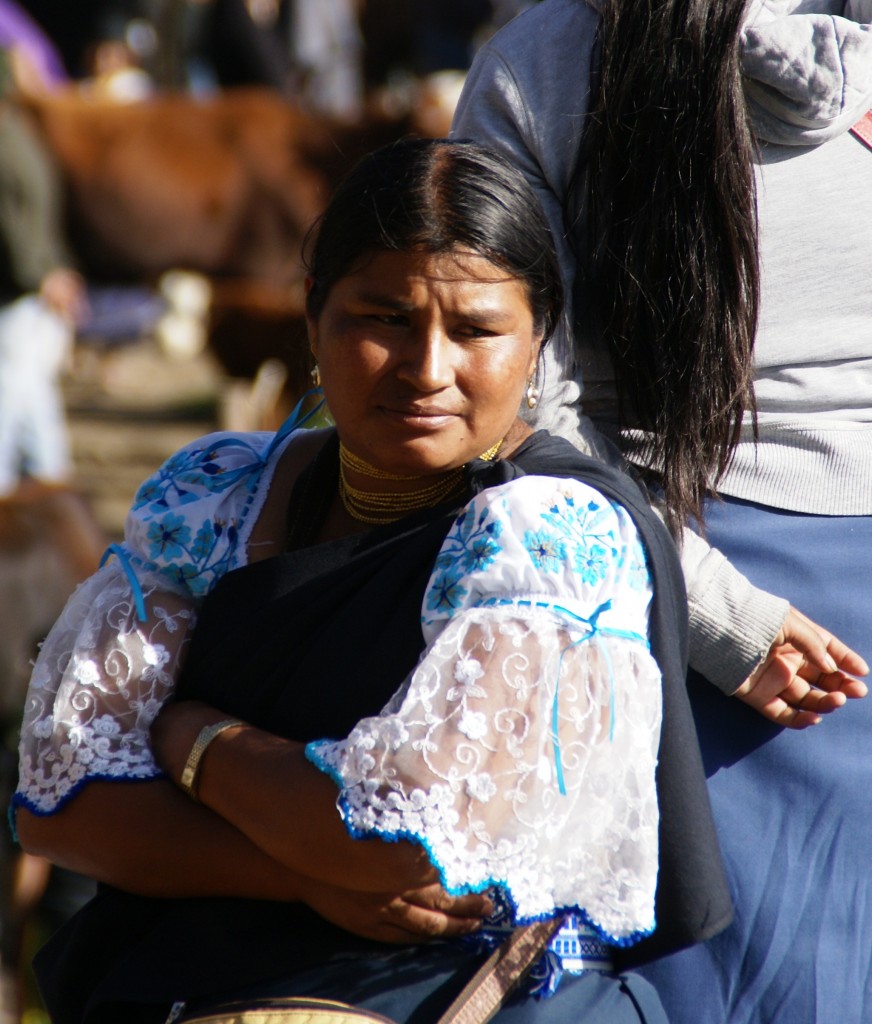
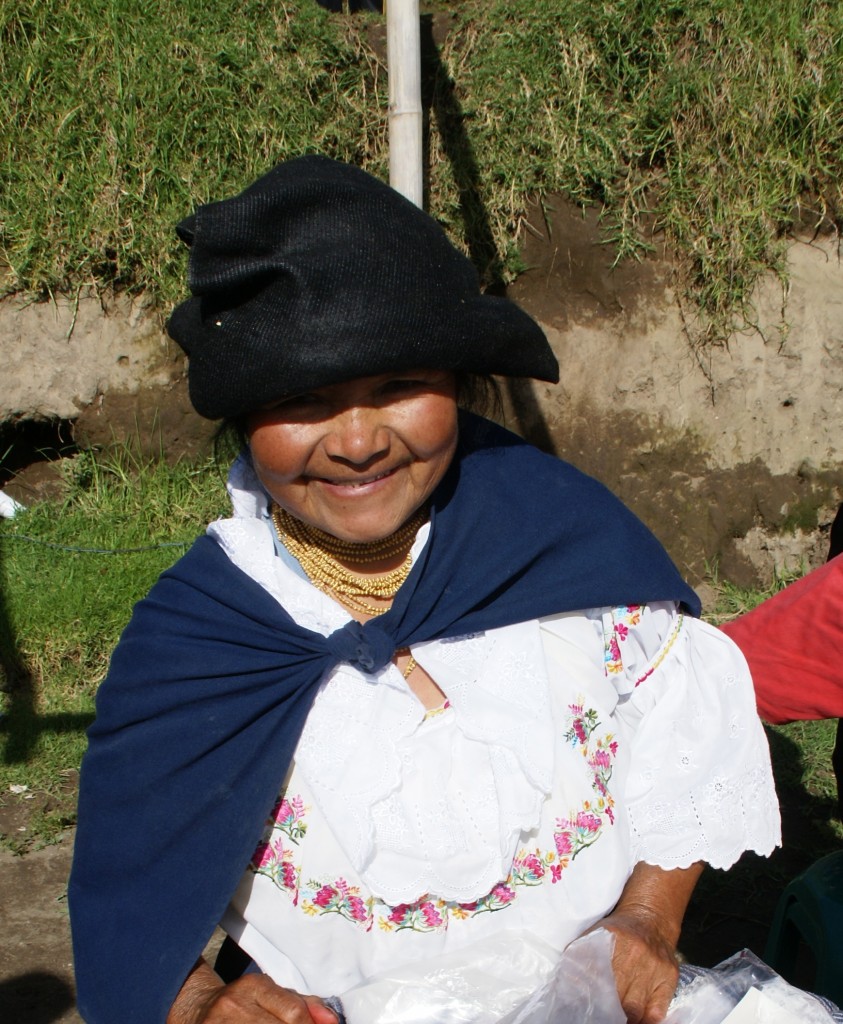
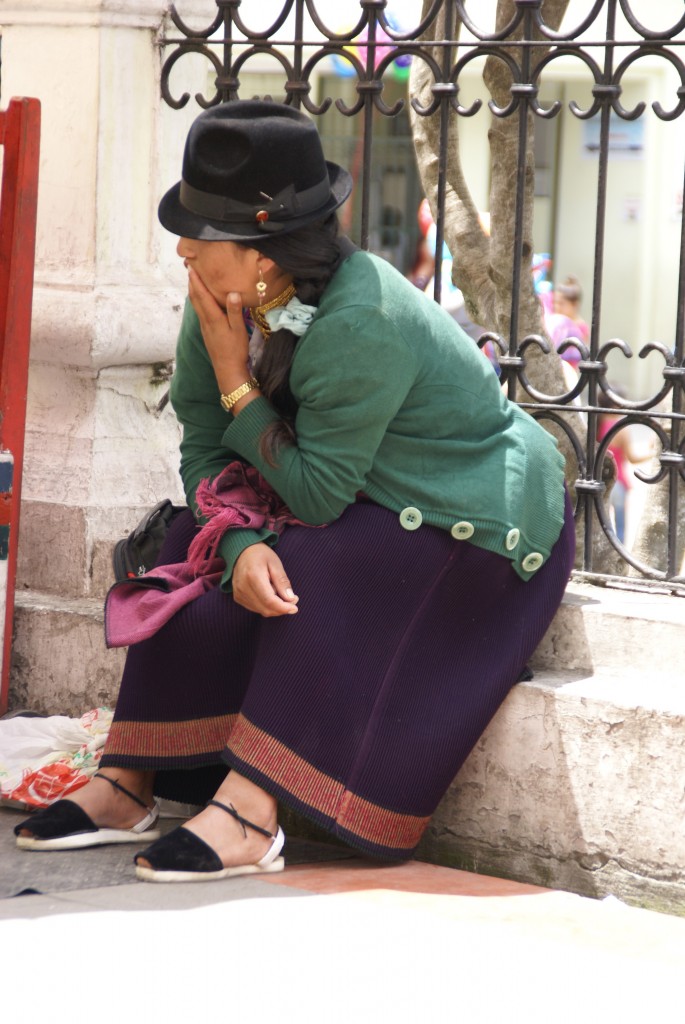
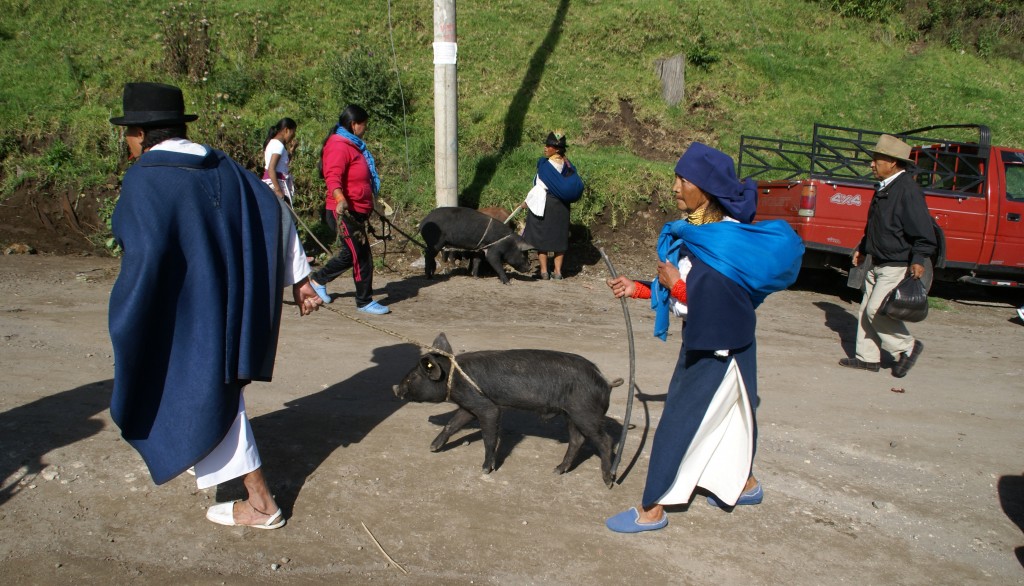
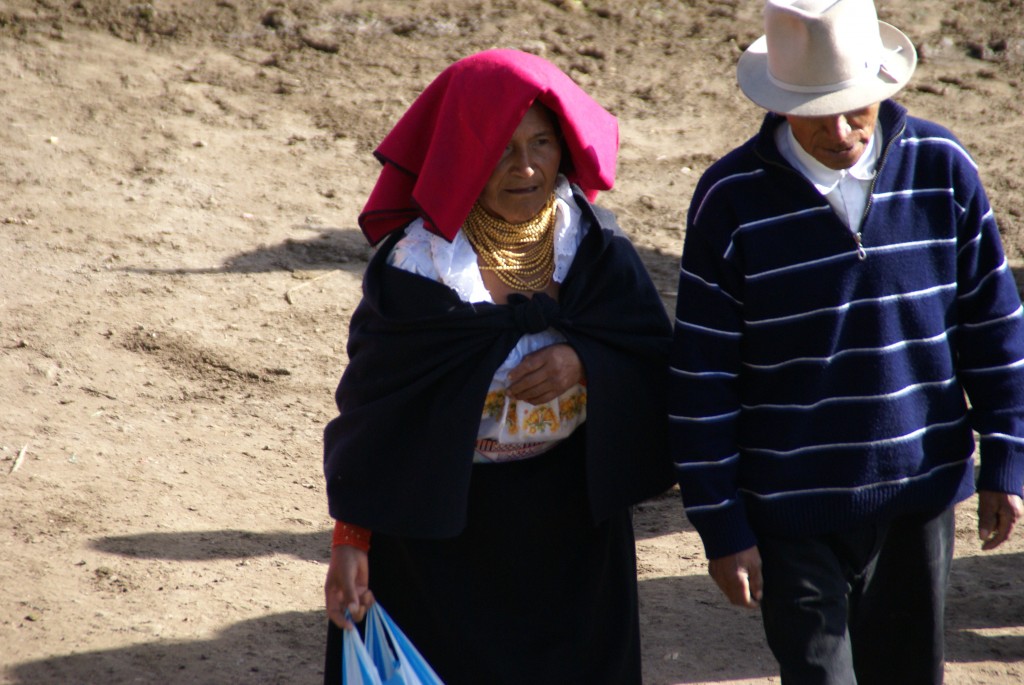
The livestock market was bustling with distinct sections for cows, pigs and poultry. Perusing the market were obvious experts with high cheekbones and skin a beautiful tan colour with dark rosy cheeks, a colour that seems to only come from living at high altitudes. There was much discussion, poking to check for plumpness and battering before purchases were made. Reluctant squealing pigs were walked home on leads and bulging sacks clucked and squawked.
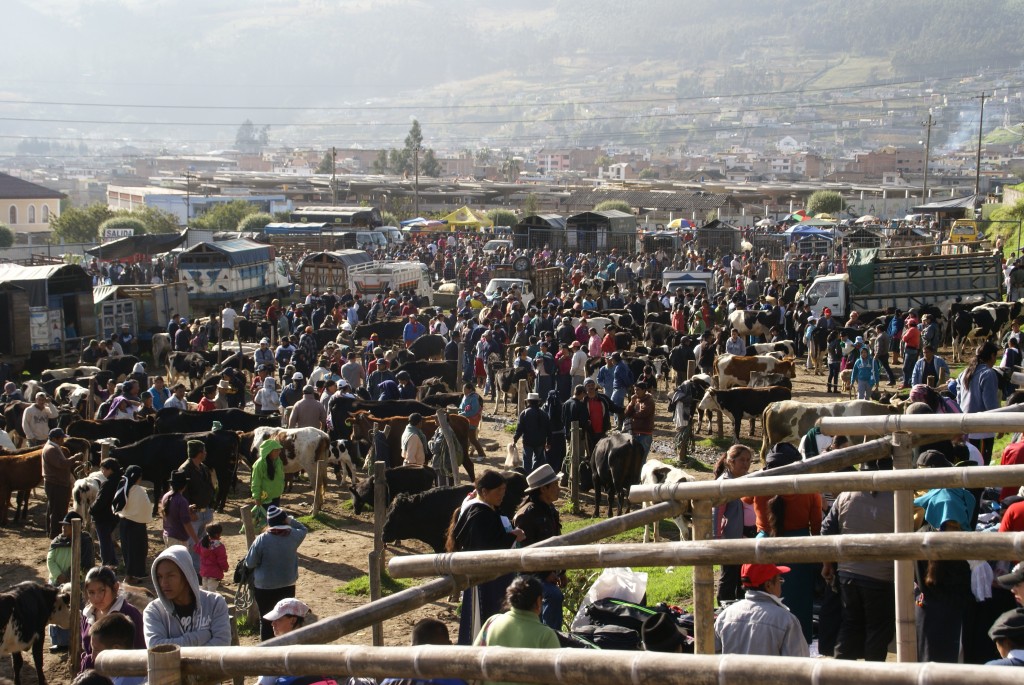
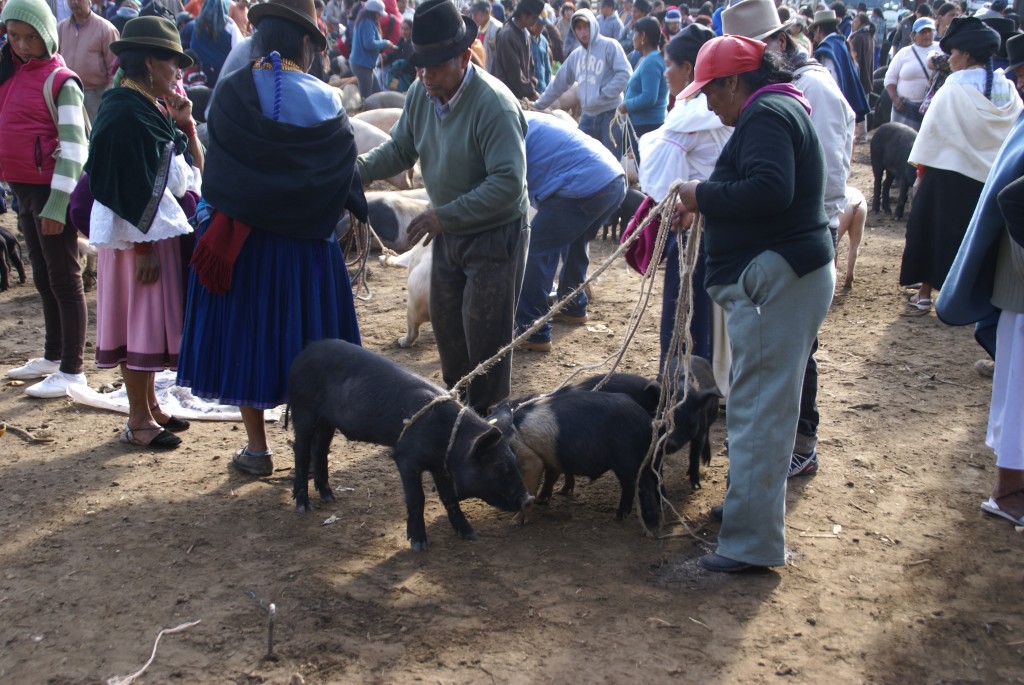
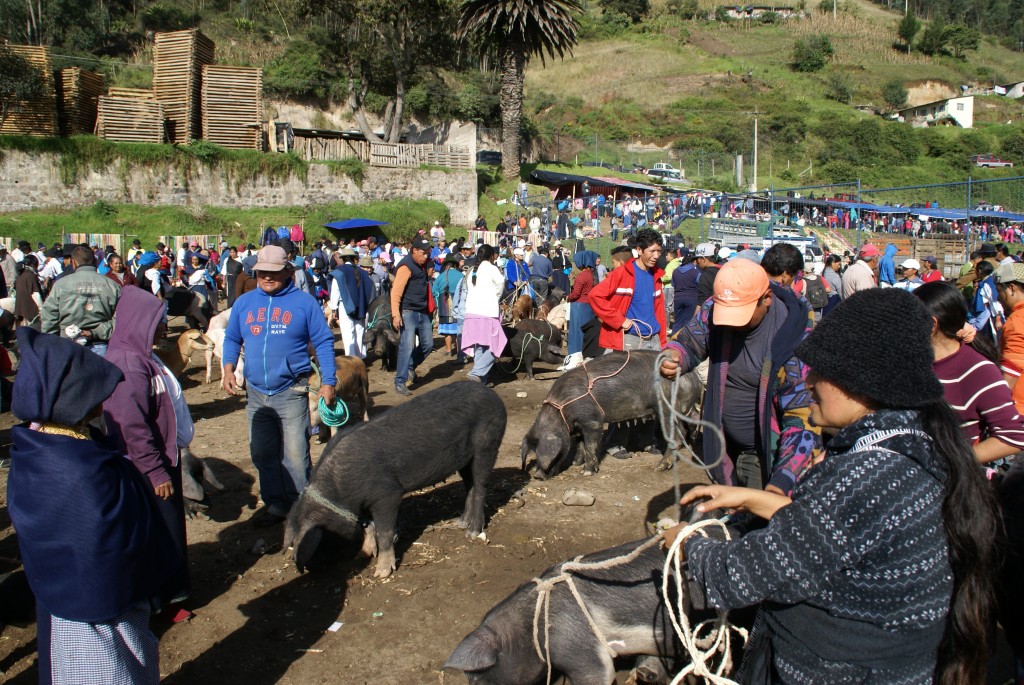
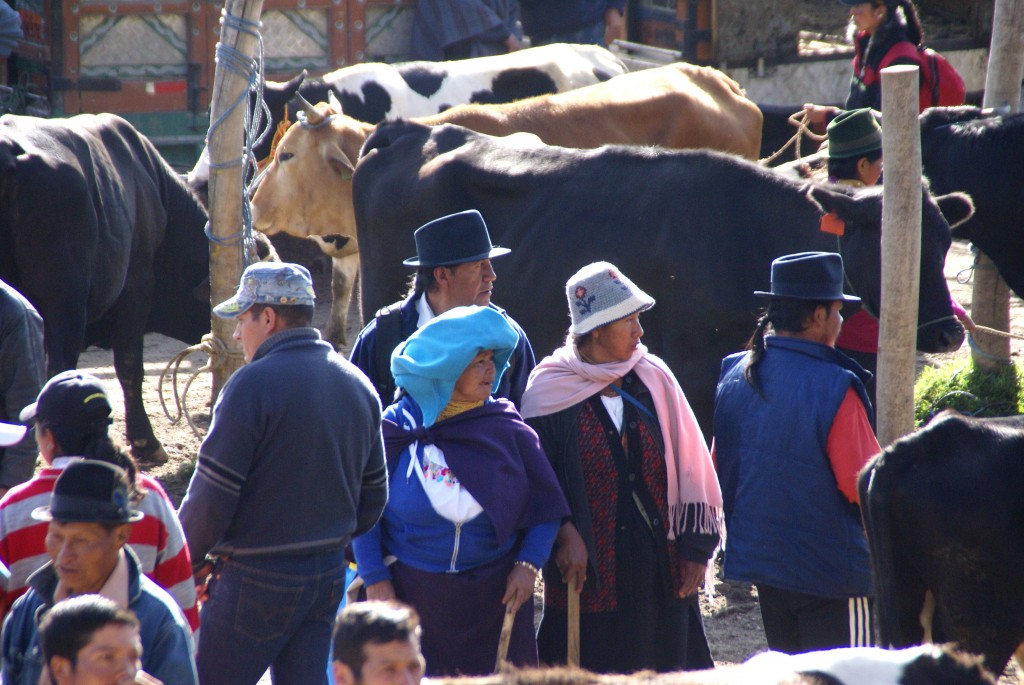
In the poultry and small animal section we saw something more usually found in a pet shop, rather than a livestock market at home. Guinea pigs, known as cuy, is a popular dish here grilled over a fire. Needless to say, the girls have threatened never to speak to Steve again if he orders one. He tried it over a decade ago when we were in Peru, his verdict: not much meat and too many bones, so no loss there.
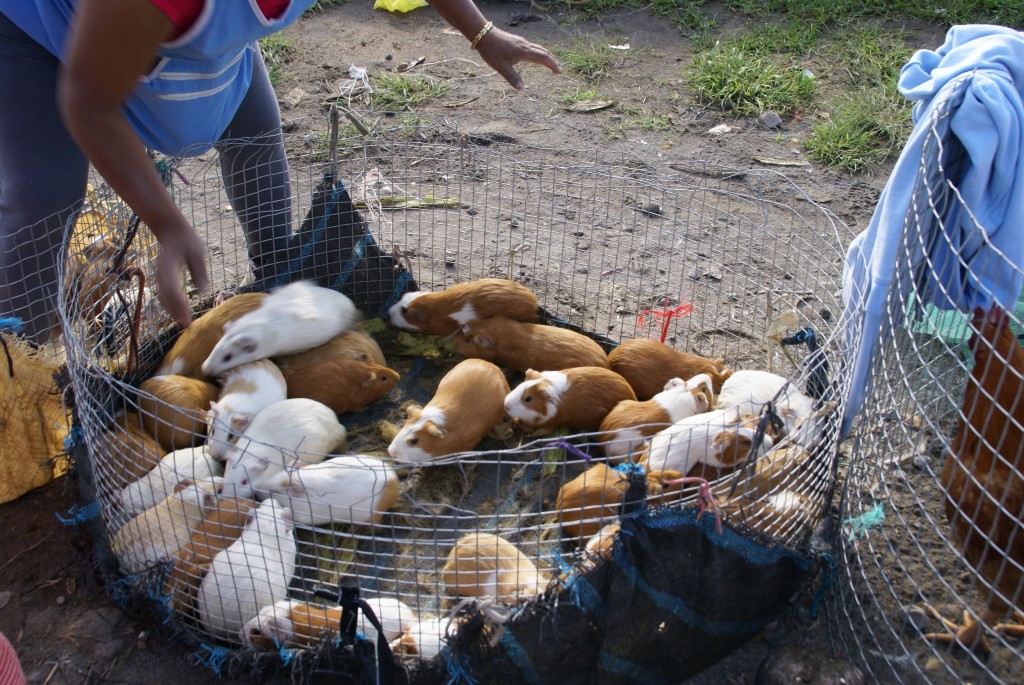
Lucy fell in love with the baby rabbits and was most upset when we explained that although we had told her she could spend her pocket money on anything at the market, we didn't mean a pet.
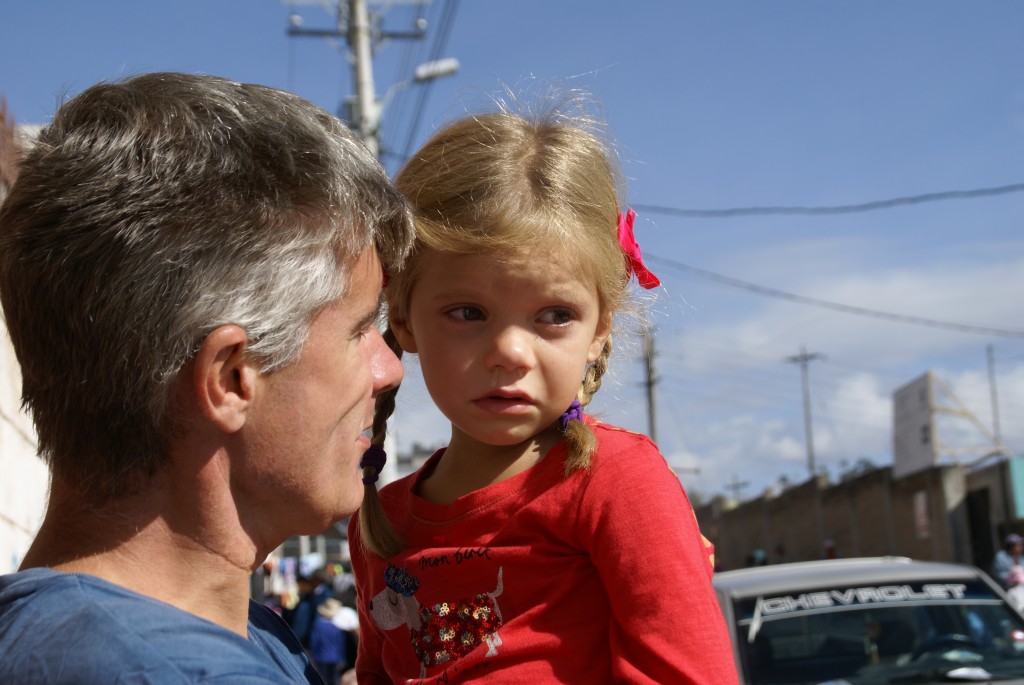
We followed the crowds of people as we left the dirt lot and made our way into town. Plaza de Poncho and it's surrounding streets host a bewildering array of goods for sale on Saturday from fake crocs to a whole host of different types of maize. It is the textiles and weaving that are the biggest draw for outsiders though. Famed throughout Ecuador for their brightly coloured, high quality textiles made using traditional looms. The weavers from the surrounding villages flood in with their wares.
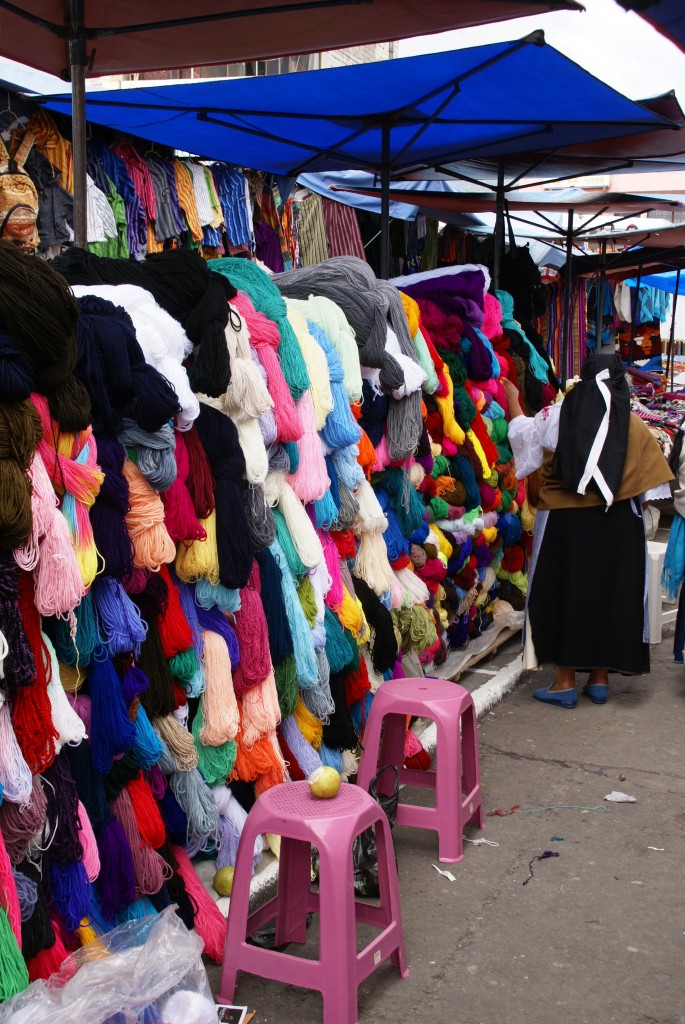
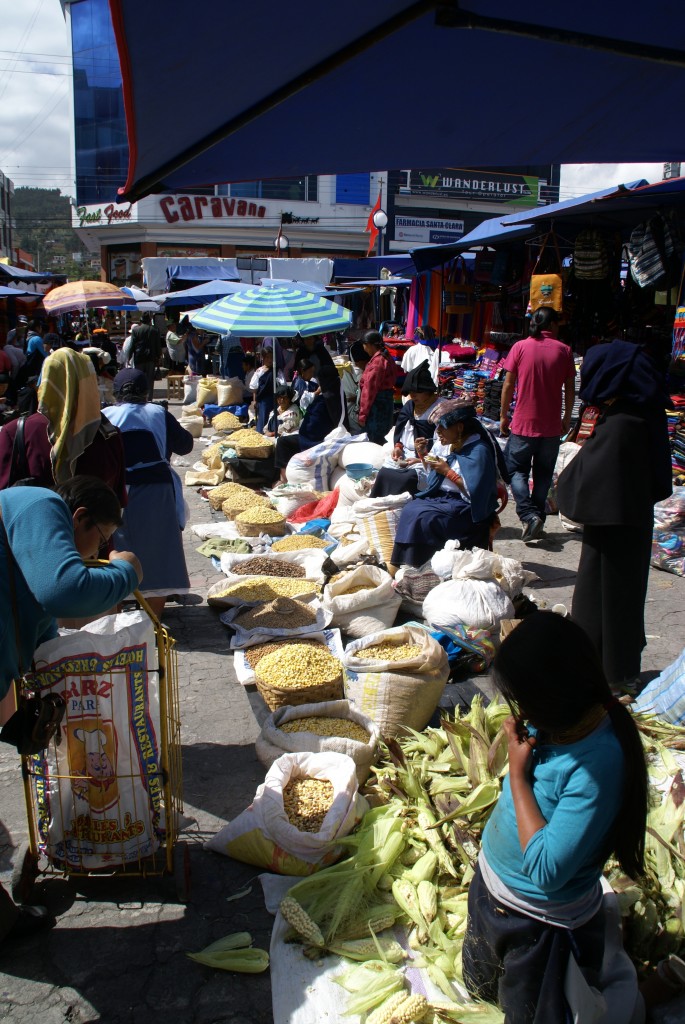
We are not big shoppers usually because we can't carry everything but we were beguiled by the array of colours and softness of the alpaca wool. We came away with ponchos, shawls and Lucy splurged on the softest, fluffiest alpaca wool lama as a surrogate pet.
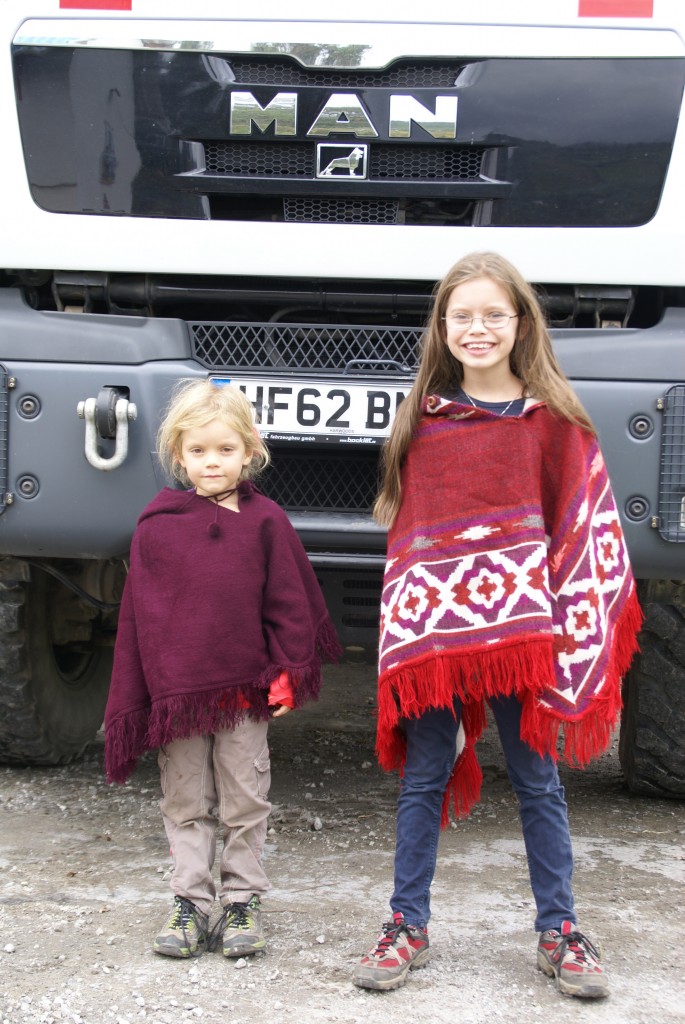
Lunch was at a bustling stand selling roasted pork on top of a maize stew, it was absolutely delicious.
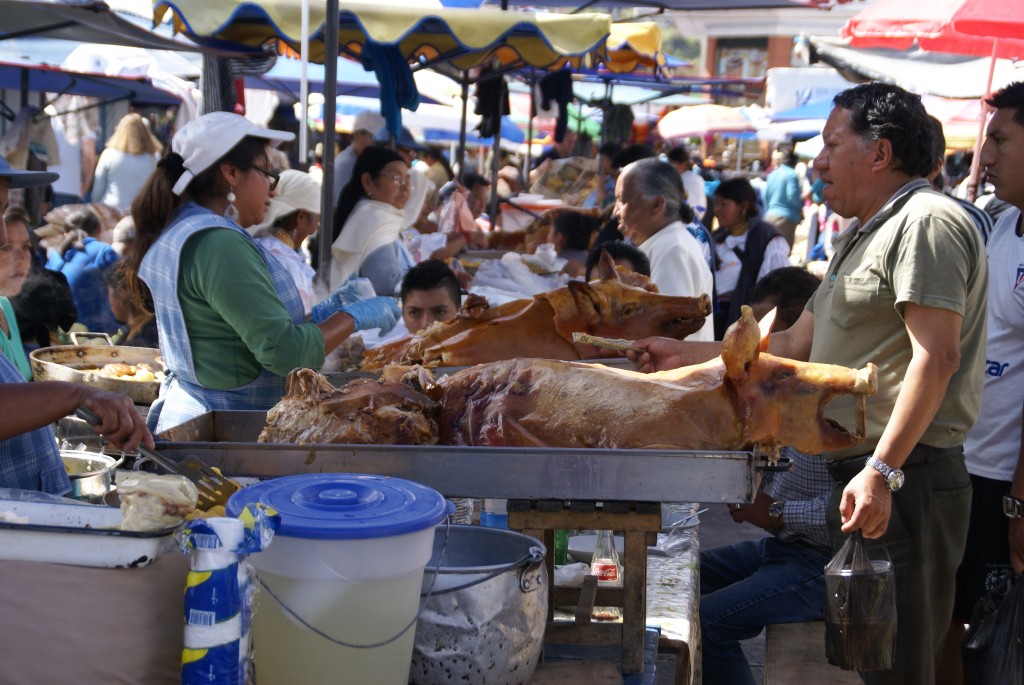
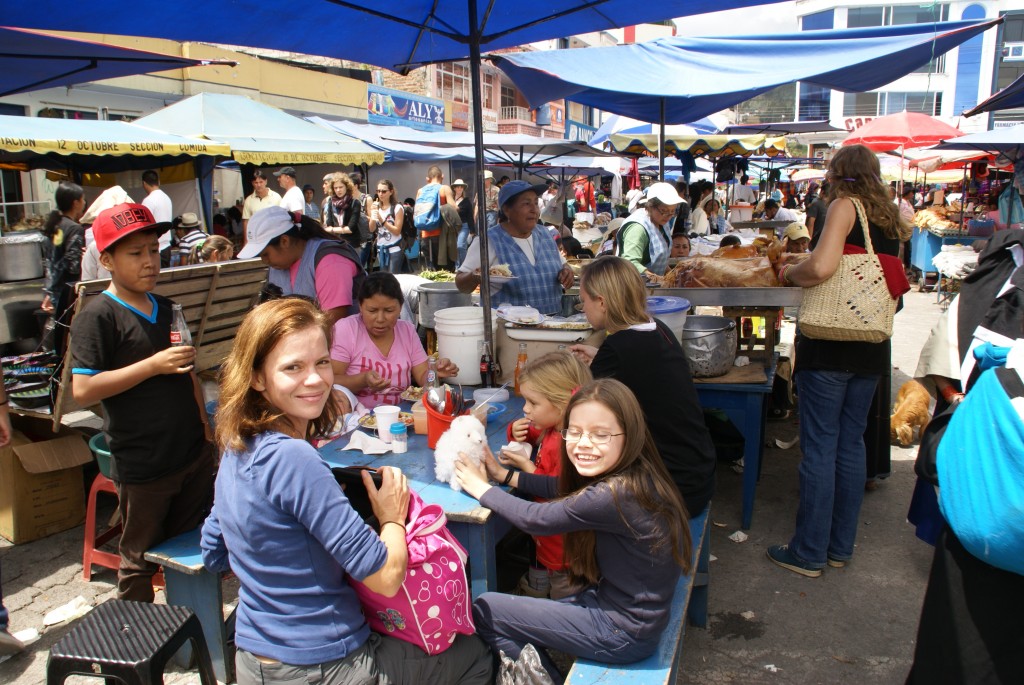
Ecuador is named for its position on the equator, so there was no way we were going to miss the opportunity to mark our transition from the northern to southern hemisphere. We actually crossed it first on a wiggly road heading to Quito, completely unrecognised bar the countdown on the sat-nav. The Ecuadorians celebrate it with style though with a dedicated theme park: Midad del Mundo (Middle of the Earth), so we took a detour via the outskirts of Quito. We took the classic straddling the equator photos and had a good nose around the museum. Although actually the line is not quite on the equator which is a couple of hundred metres away.
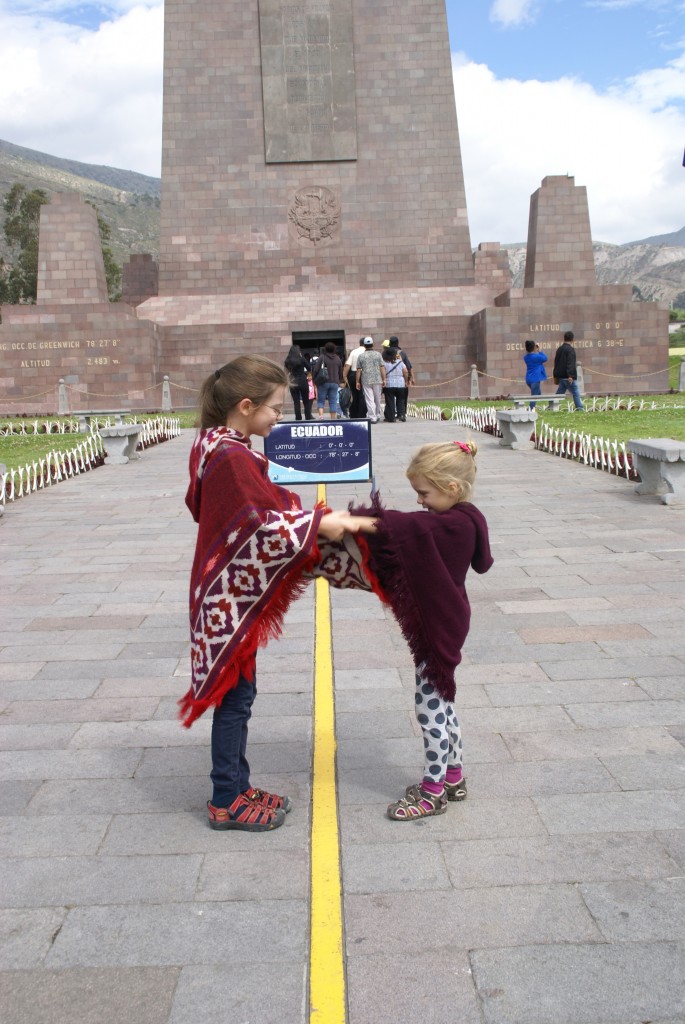
Heading east of Quito we headed up into the mountains again, we hit our highest point yet at 4070m before we descended to the small village of Papallacta and the thermal springs a few km above. We didn't go in as soon as we arrived, as it was Sunday afternoon and looked busy. Camped in their car park we were surrounded by hills shrouded in mists, the drizzle started and the temperature dropped. We questioned how good the springs would be in the freezing wet. However the following morning we weren't disappointed. Despite it raining and being 11 degrees centigrade outside, the pools were delightfully warm. There were about 25 spotless pools of a variety of size and temperature. The only problem was getting out of them to run to the next. Steve, Lucy and I even briefly braved the icy pool with water straight from the top of the mountain, to get the full benefits. It was so good and as the ticket lasted all day, we returned again in the afternoon and a brief after dark visit. It was very atmospheric bathing in the dark pools watching the steam rise from the hot water and joining the mist from above.
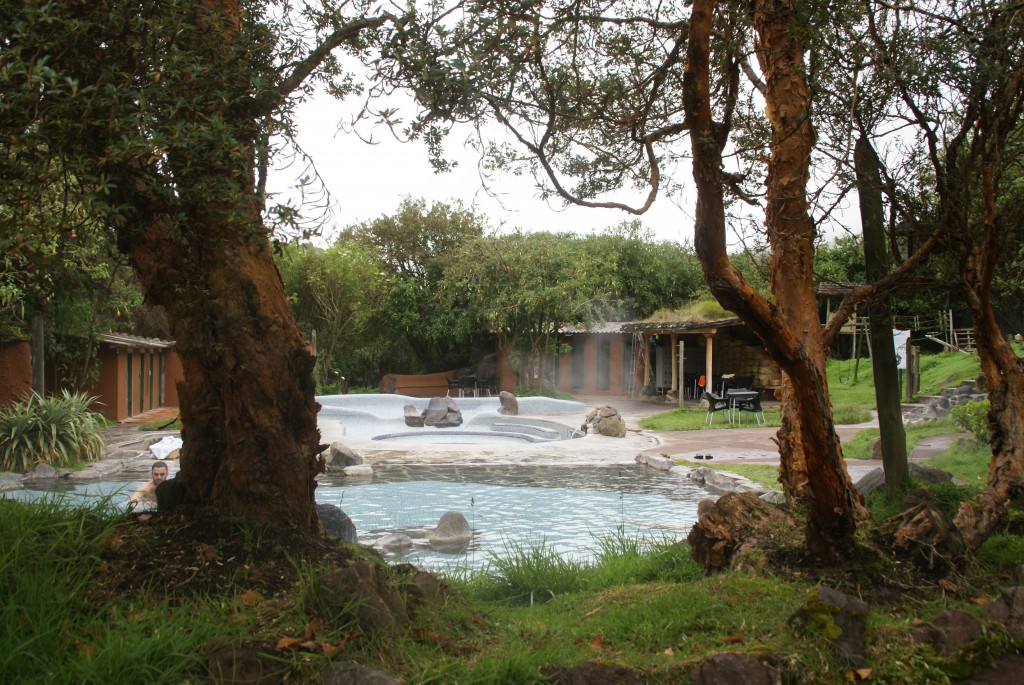
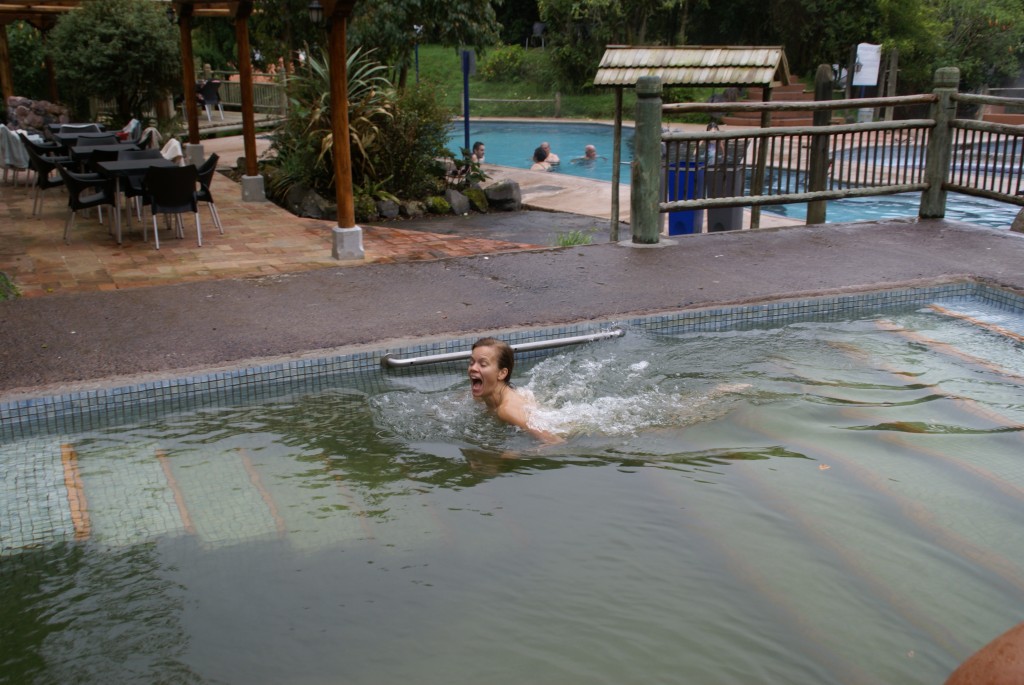
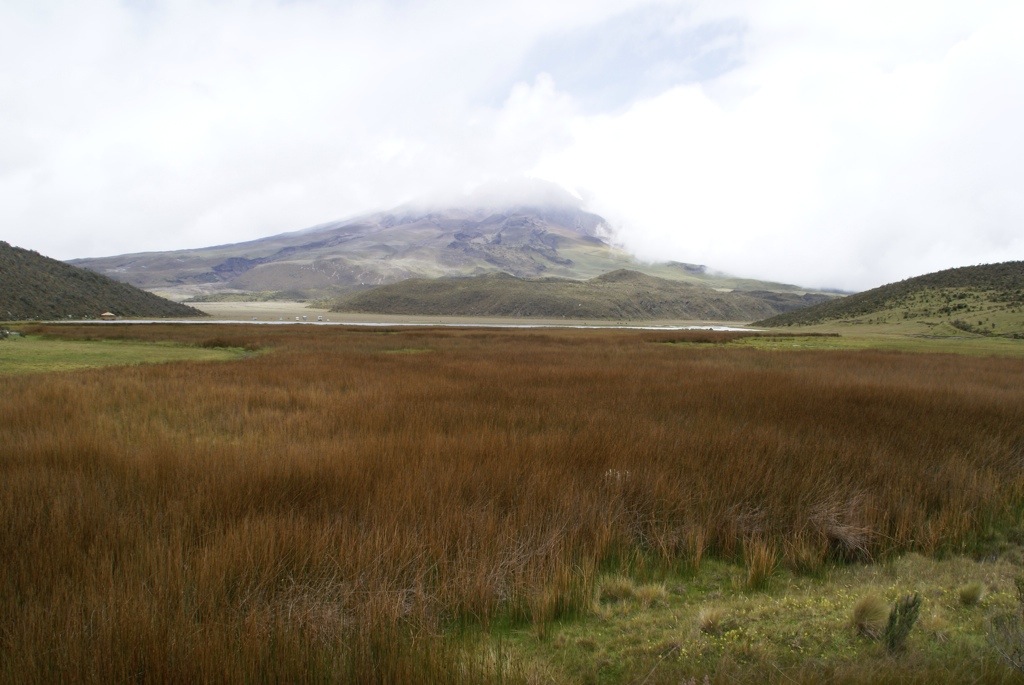
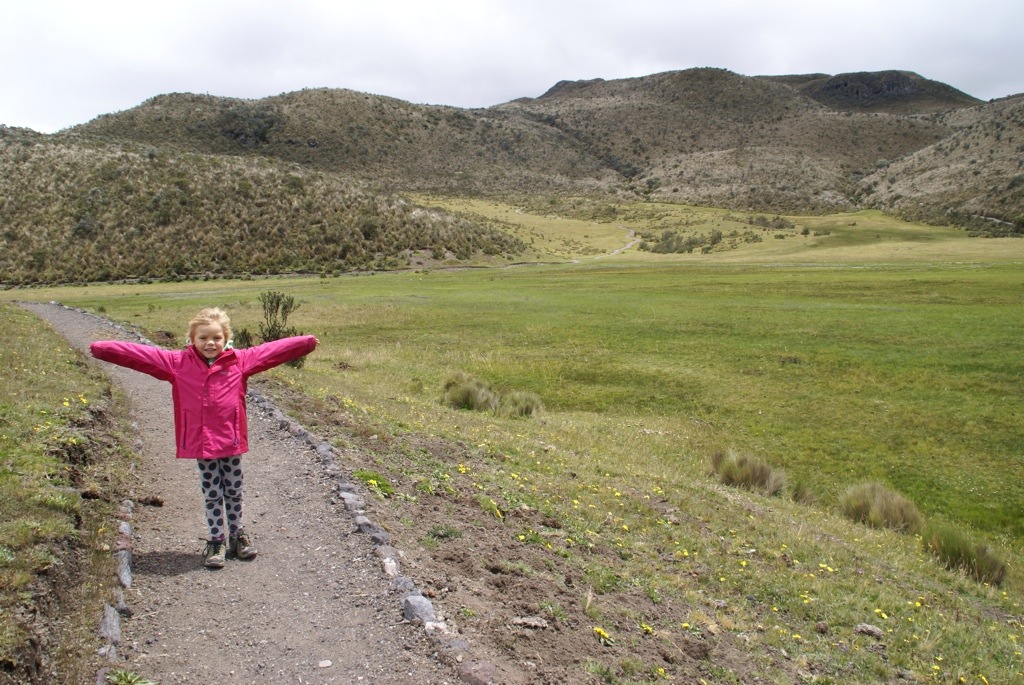 There are 2 campsites near the lake and we had lunch at one.
There are 2 campsites near the lake and we had lunch at one.
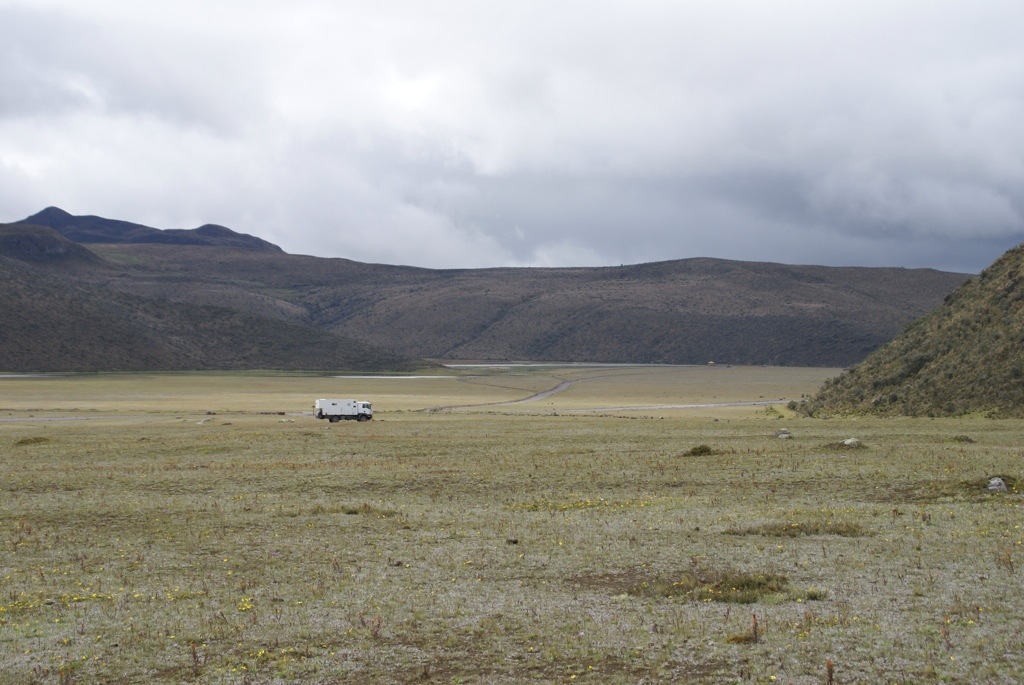 Looking at the map we could see you could drive further up to just below a refugio ( the mountain hut where the climbers stay before making summit attempts).
When we reached the "car park" we could again catch glimpses of the volcano but we could also see the glaciers in between the clouds which kept rolling in.
Looking at the map we could see you could drive further up to just below a refugio ( the mountain hut where the climbers stay before making summit attempts).
When we reached the "car park" we could again catch glimpses of the volcano but we could also see the glaciers in between the clouds which kept rolling in.
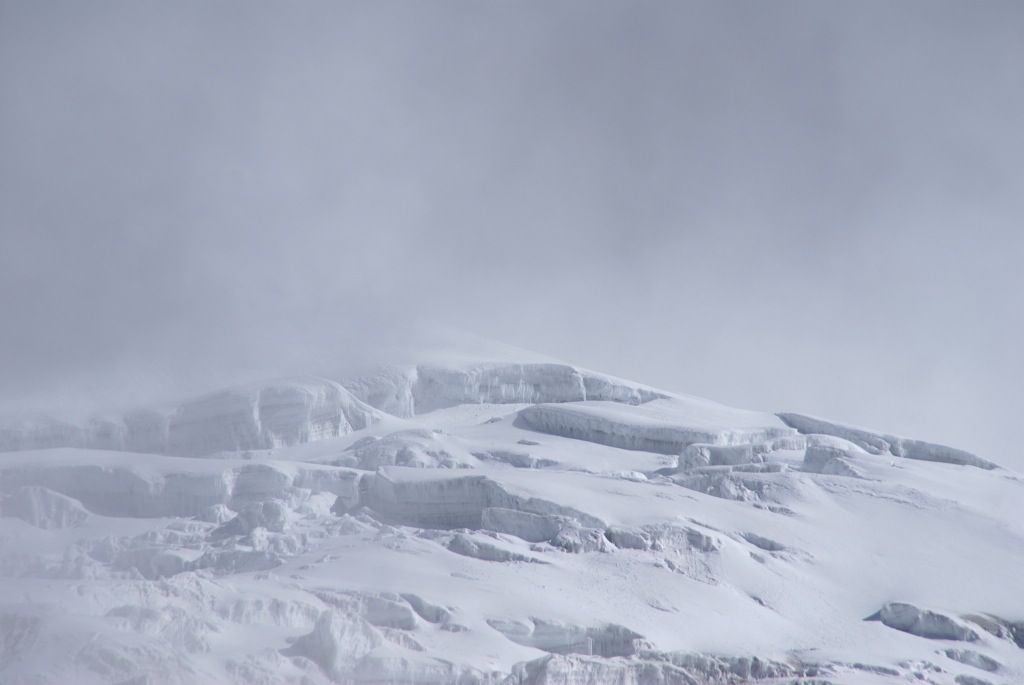
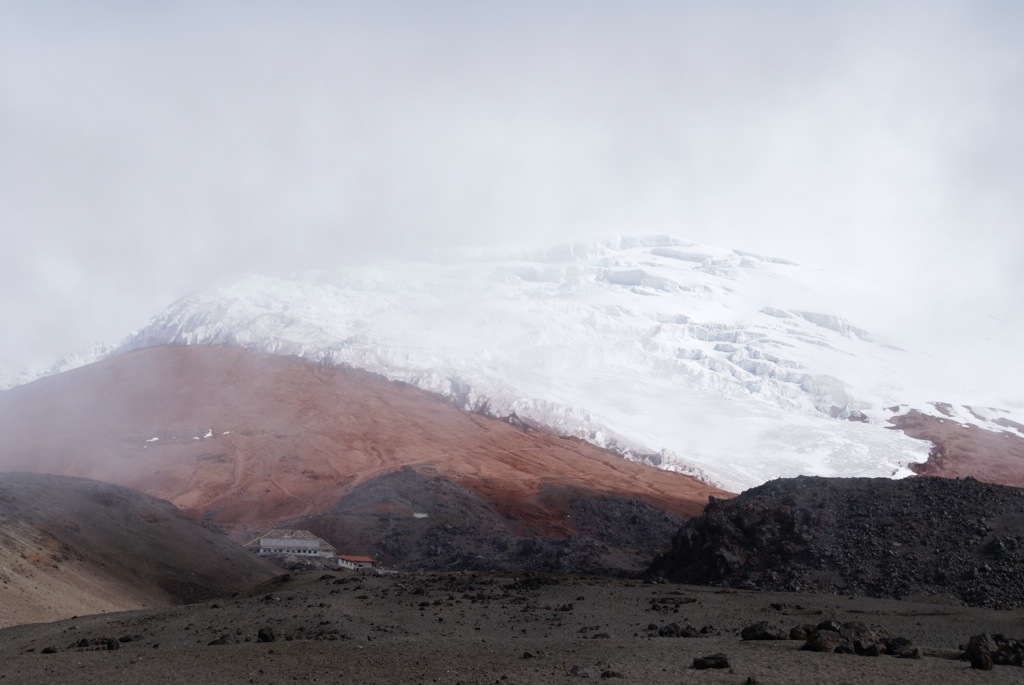 The road up had been good and whilst we still felt fine the truck was struggling for power in the thin air. Not surprising really as we had reached 4,625m. We did not stay long as I was worried the engine may not start but once started we did not need much power as it was downhill all the way to our campsite for the night which was only at 3,850m!
The road up had been good and whilst we still felt fine the truck was struggling for power in the thin air. Not surprising really as we had reached 4,625m. We did not stay long as I was worried the engine may not start but once started we did not need much power as it was downhill all the way to our campsite for the night which was only at 3,850m!

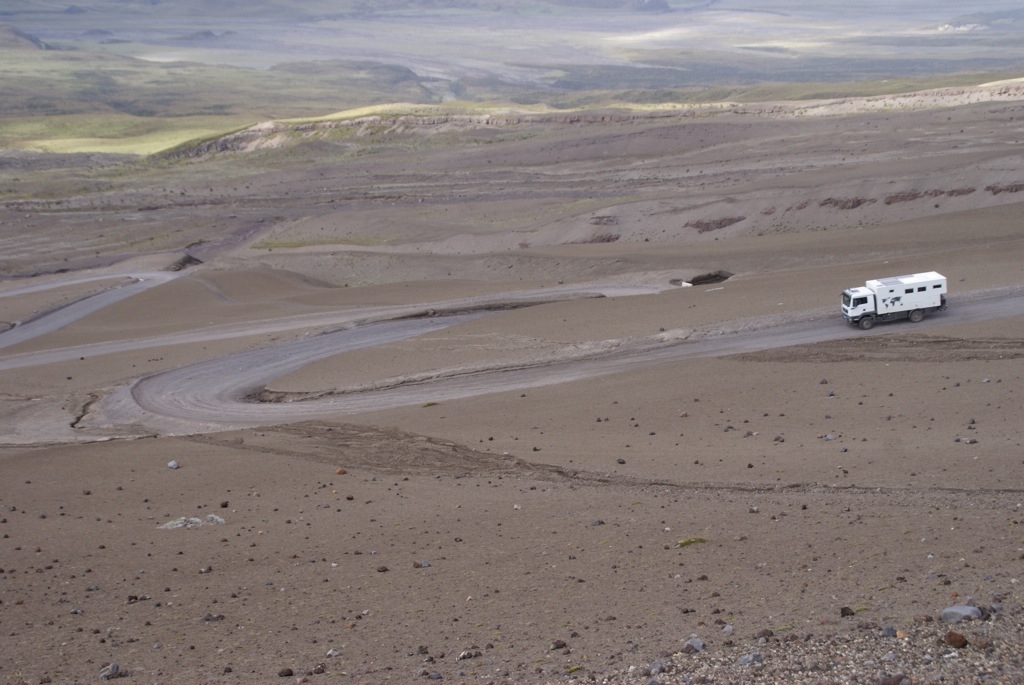
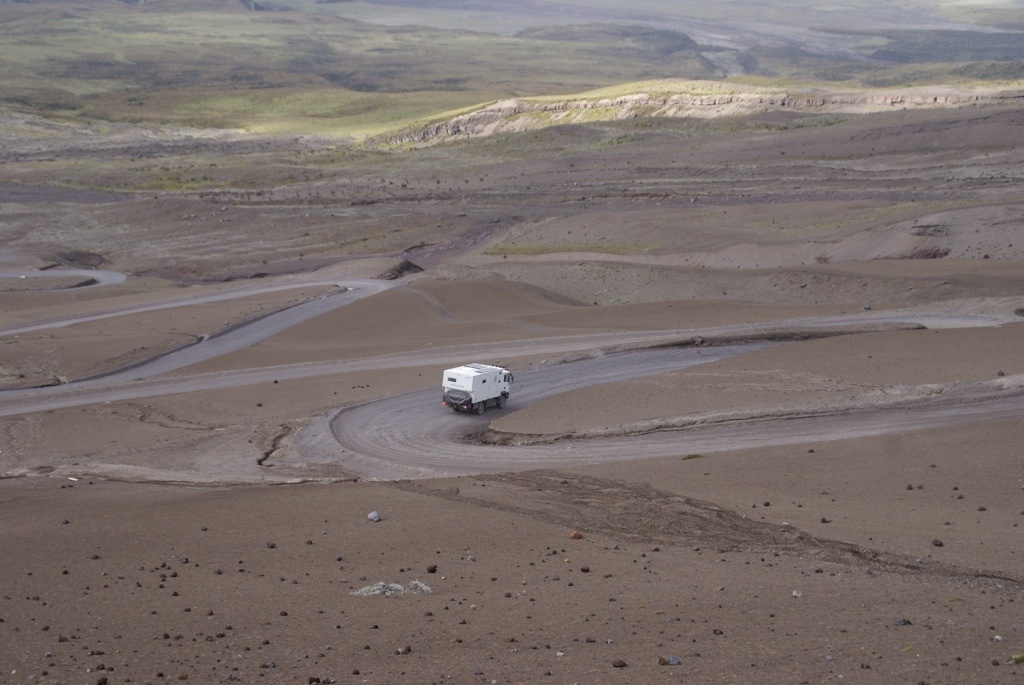 We went to bed hoping the volcano would be clear in the morning. At just before 6, Gilly jumped out of bed to check (really rare for her to be up first) and to our delight she shouted it is clear, completely clear!
Despite it been only 2 degrees we jumped up and spent the next hour enjoying the view with hot cups of tea which we shared with 2 Canadian cyclists who were camping in a tent nearby.
The views of Cotopaxi were stunning.
We went to bed hoping the volcano would be clear in the morning. At just before 6, Gilly jumped out of bed to check (really rare for her to be up first) and to our delight she shouted it is clear, completely clear!
Despite it been only 2 degrees we jumped up and spent the next hour enjoying the view with hot cups of tea which we shared with 2 Canadian cyclists who were camping in a tent nearby.
The views of Cotopaxi were stunning.
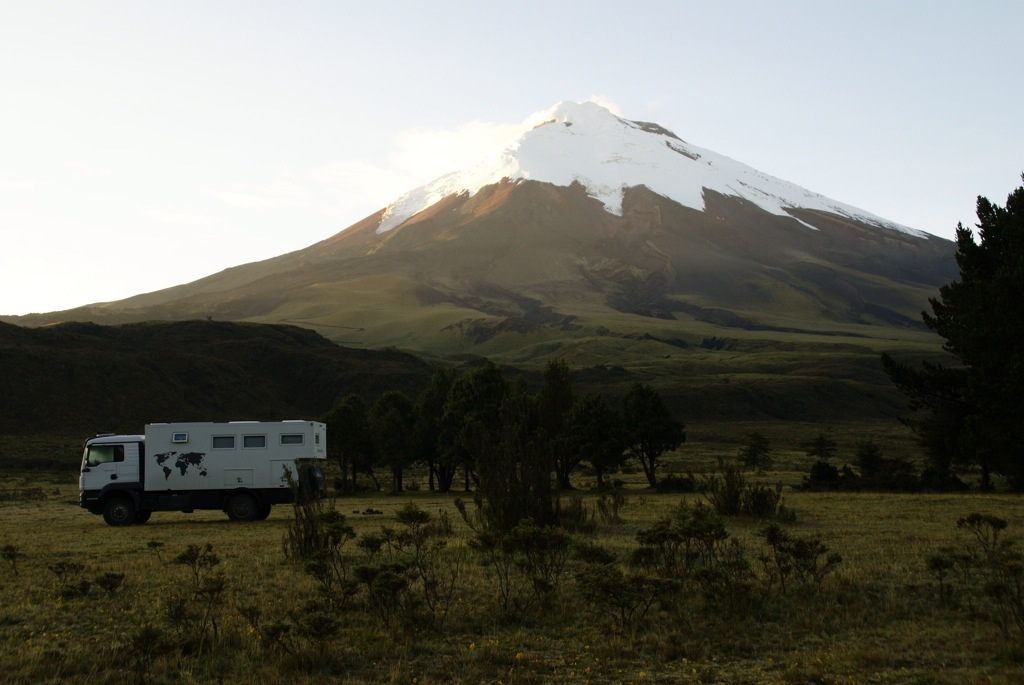
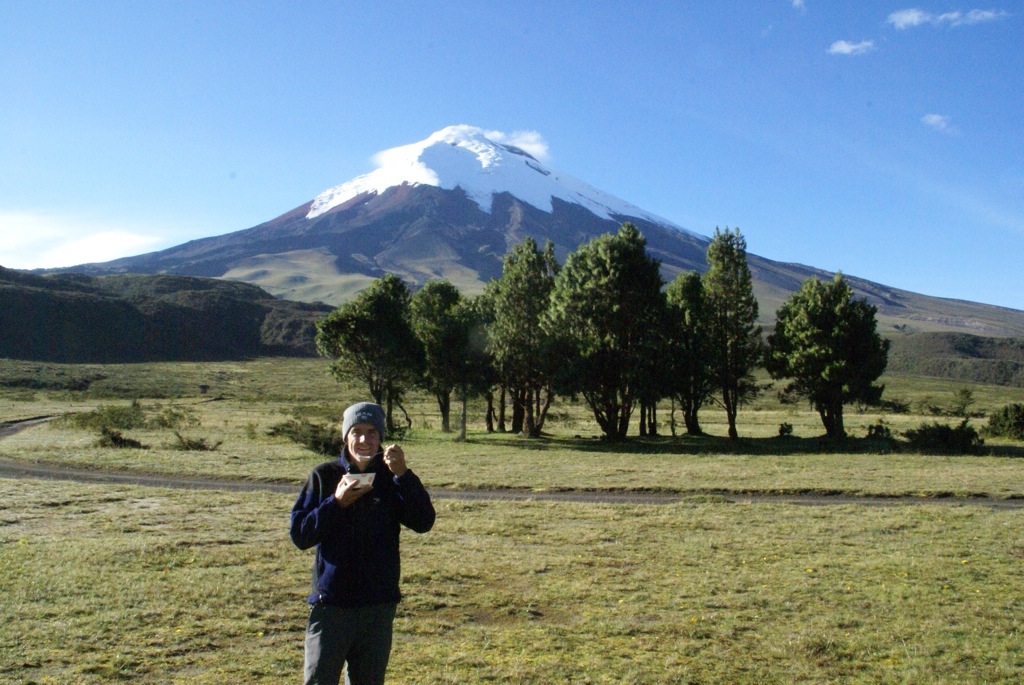
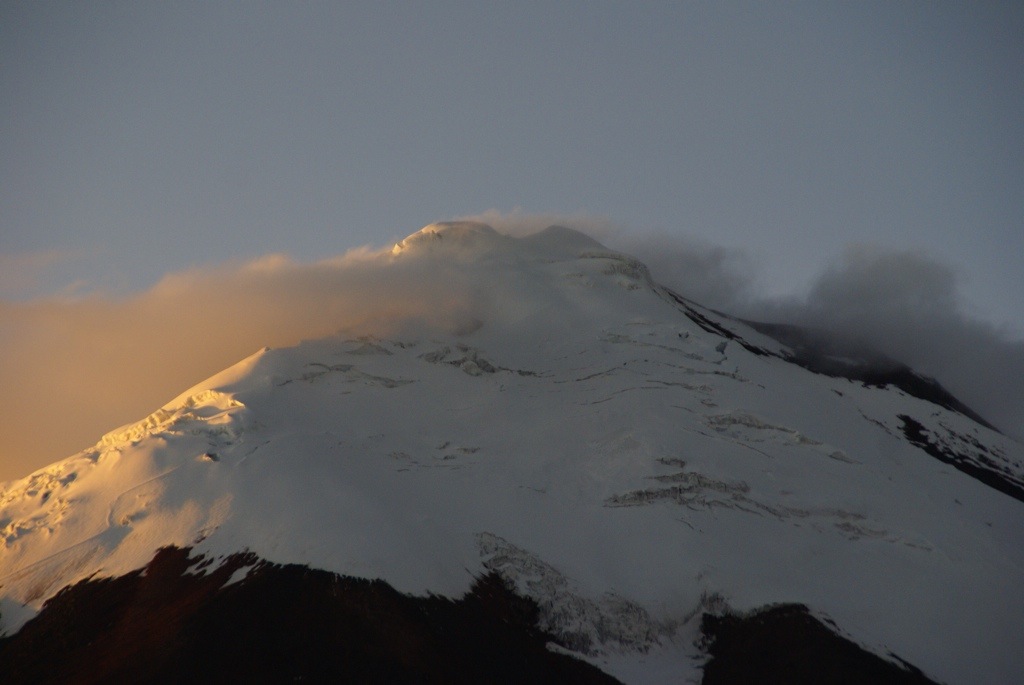
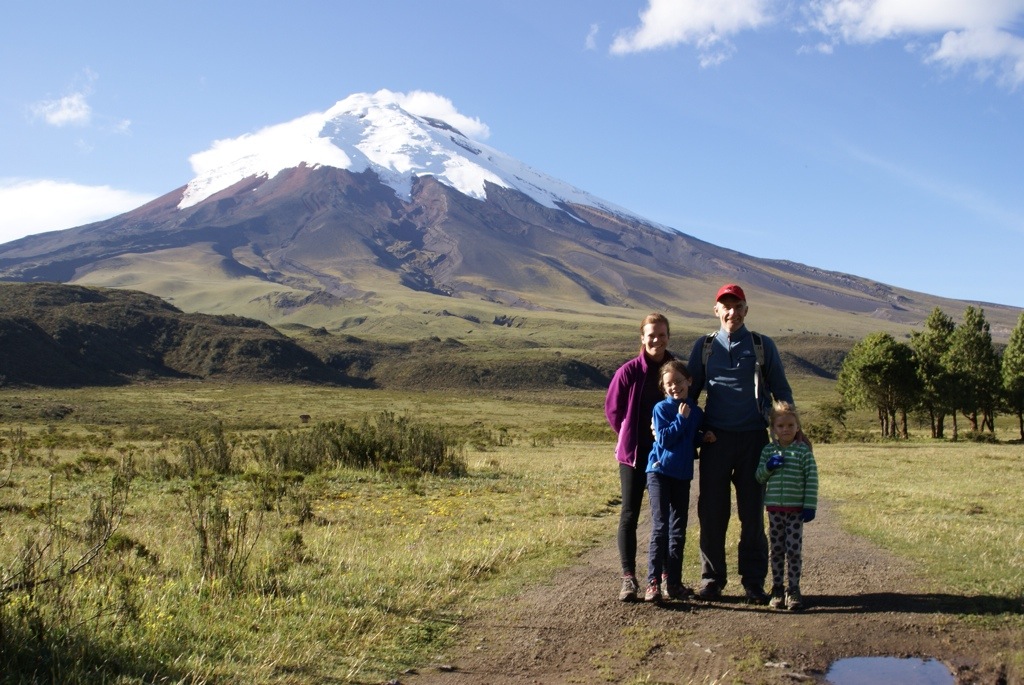 We could also see over to Volcan Chimborazo, the tallest mountain in Ecuador at 6310m. You could tell how clear it was as the volcano was over 75km away.
We could also see over to Volcan Chimborazo, the tallest mountain in Ecuador at 6310m. You could tell how clear it was as the volcano was over 75km away.
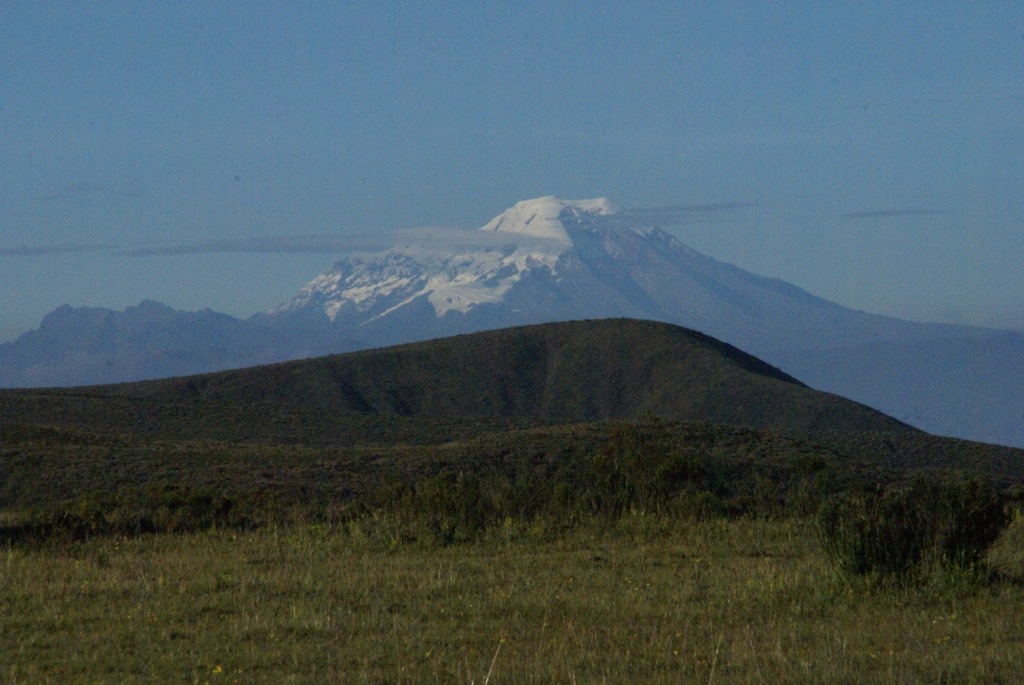 Eventually Alisha and Lucy pulled us away from the view as they were hungry. The porridge we had bought the previous week came in really handy at this altitude!
As it was clear, we decided to delay school until the afternoon and head off on a hike towards Volcan Ruminahui, a relative baby at only 4721m. The scenery on the hike was magnificent and we had spectacular views back to Volcan Cotopaxi.
Eventually Alisha and Lucy pulled us away from the view as they were hungry. The porridge we had bought the previous week came in really handy at this altitude!
As it was clear, we decided to delay school until the afternoon and head off on a hike towards Volcan Ruminahui, a relative baby at only 4721m. The scenery on the hike was magnificent and we had spectacular views back to Volcan Cotopaxi.
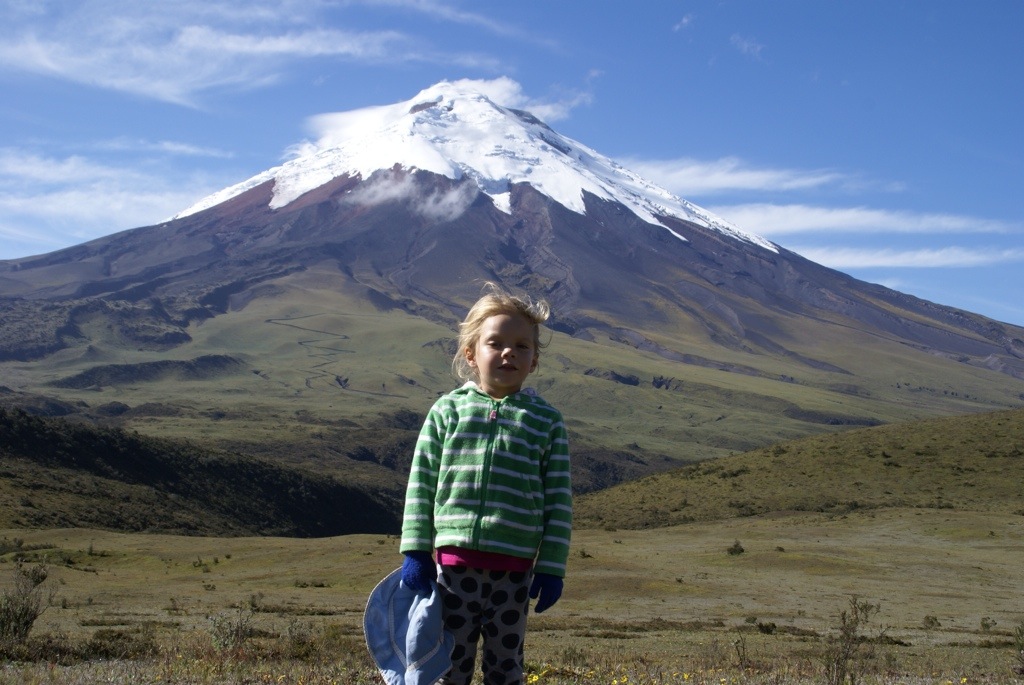
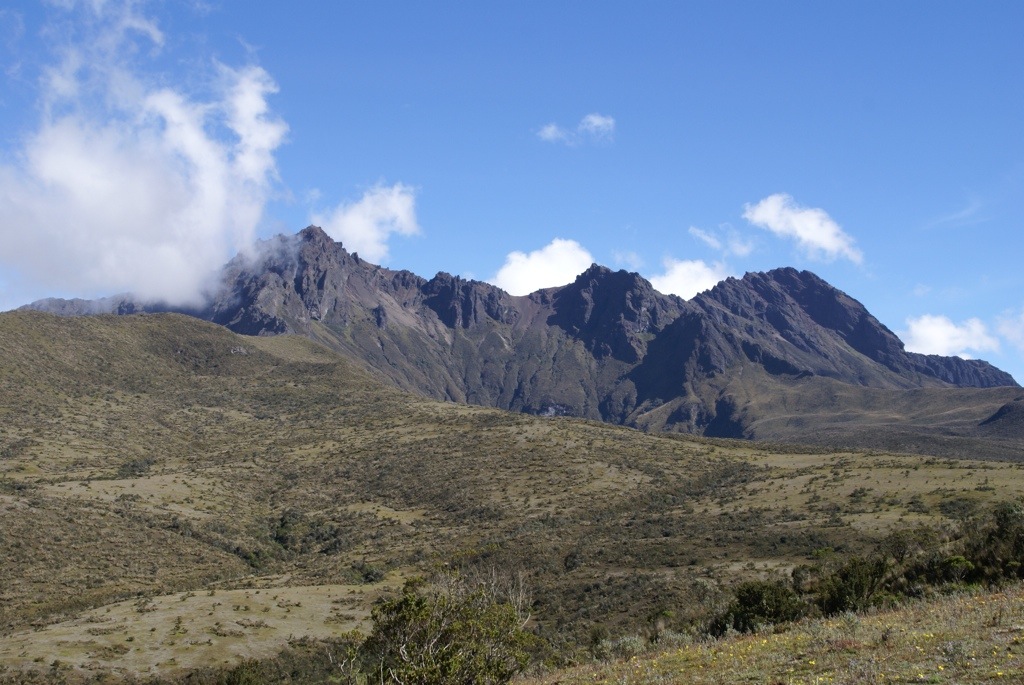
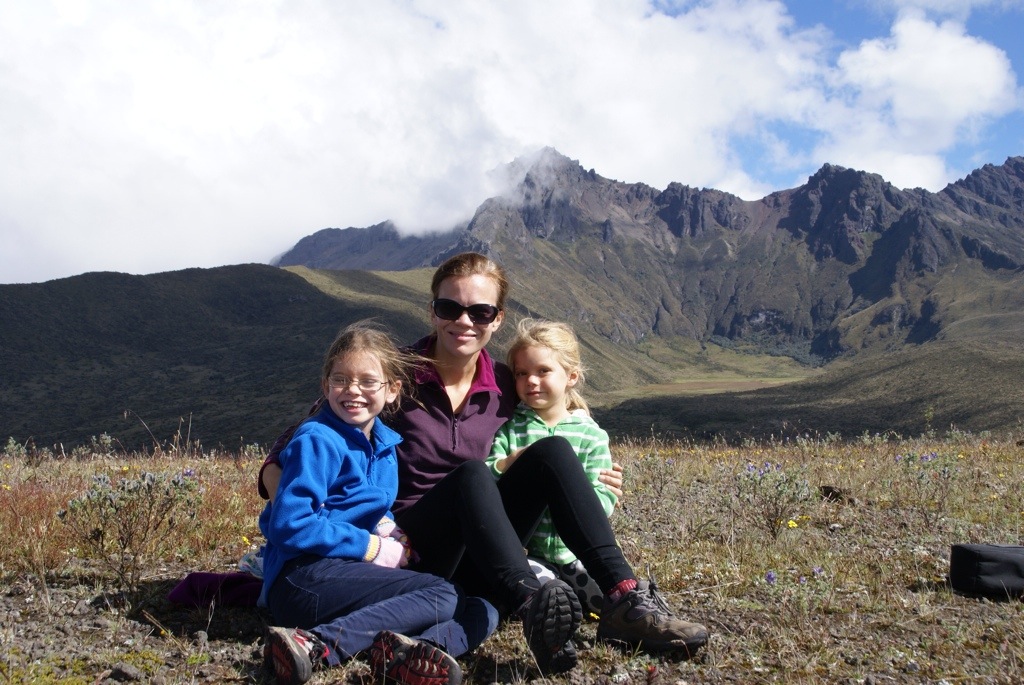 I was so proud of Alisha and Lucy who hiked for 4 hours without moaning and managed to reach a height of 4250m. They both talked the whole way up and I think by the time we got back our ears were more tired than their legs!
I was so proud of Alisha and Lucy who hiked for 4 hours without moaning and managed to reach a height of 4250m. They both talked the whole way up and I think by the time we got back our ears were more tired than their legs!
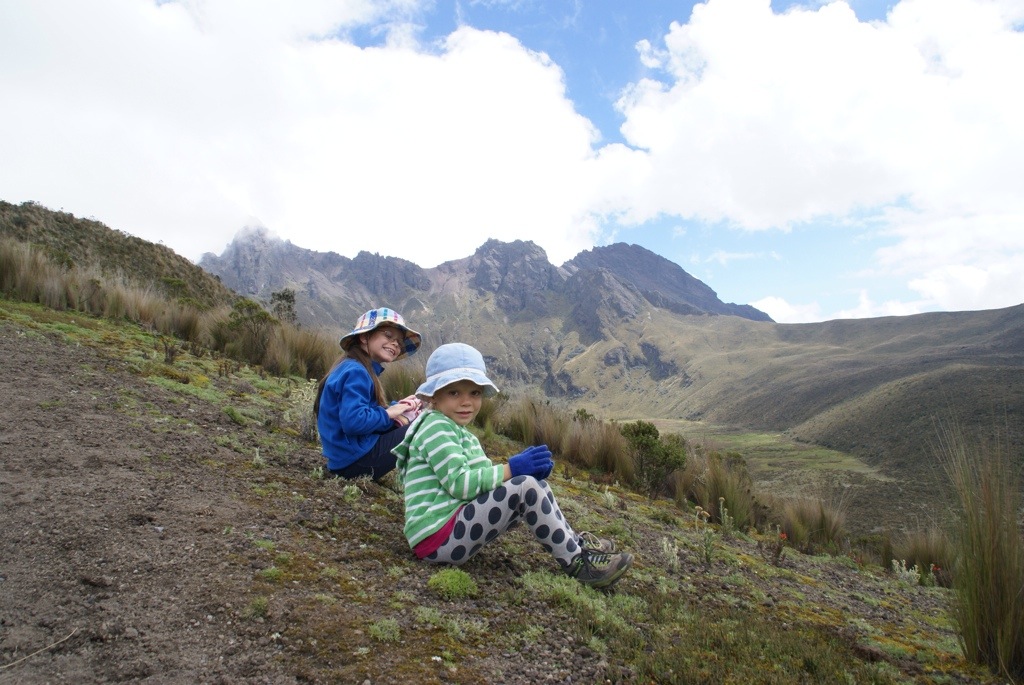 When we returned to the truck the clouds had rolled in so after a hearty lunch it was time for schooling. We had definitely done things in the right order as during schooling there was an almighty thunderstorm with lightening and hailstones.
When it finished the clouds cleared to show us that the volcano was covered in snow.
When we returned to the truck the clouds had rolled in so after a hearty lunch it was time for schooling. We had definitely done things in the right order as during schooling there was an almighty thunderstorm with lightening and hailstones.
When it finished the clouds cleared to show us that the volcano was covered in snow.

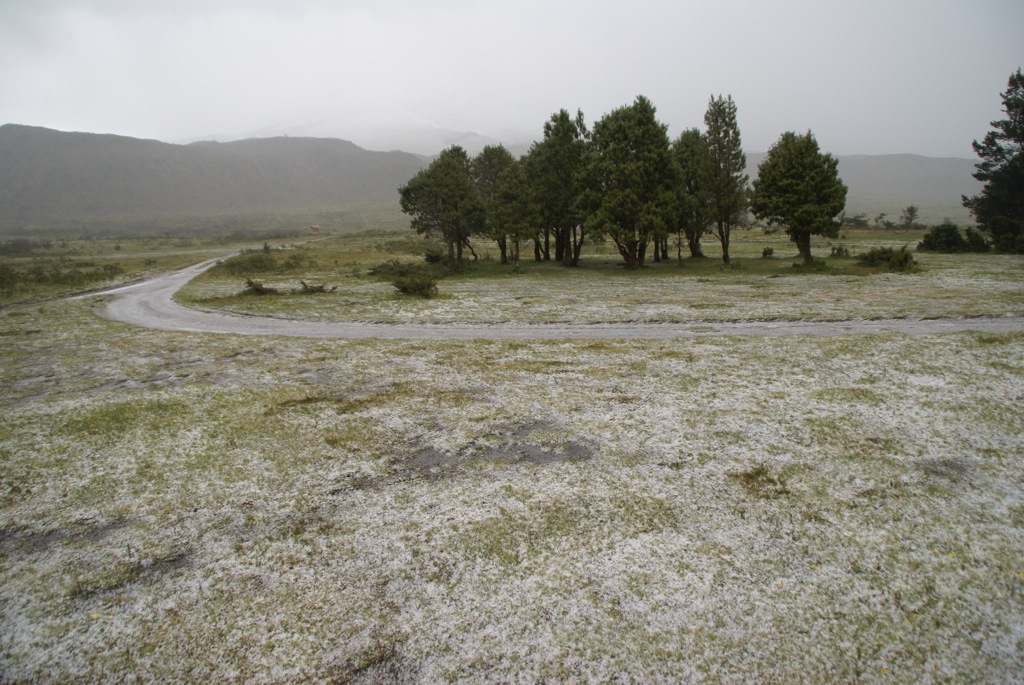 As evening approached we were again able to see the volcano in all it's beauty with the sun melting the fresh snow that had laid on it only a few hours previously. Definitely four seasons in one day.
As evening approached we were again able to see the volcano in all it's beauty with the sun melting the fresh snow that had laid on it only a few hours previously. Definitely four seasons in one day.
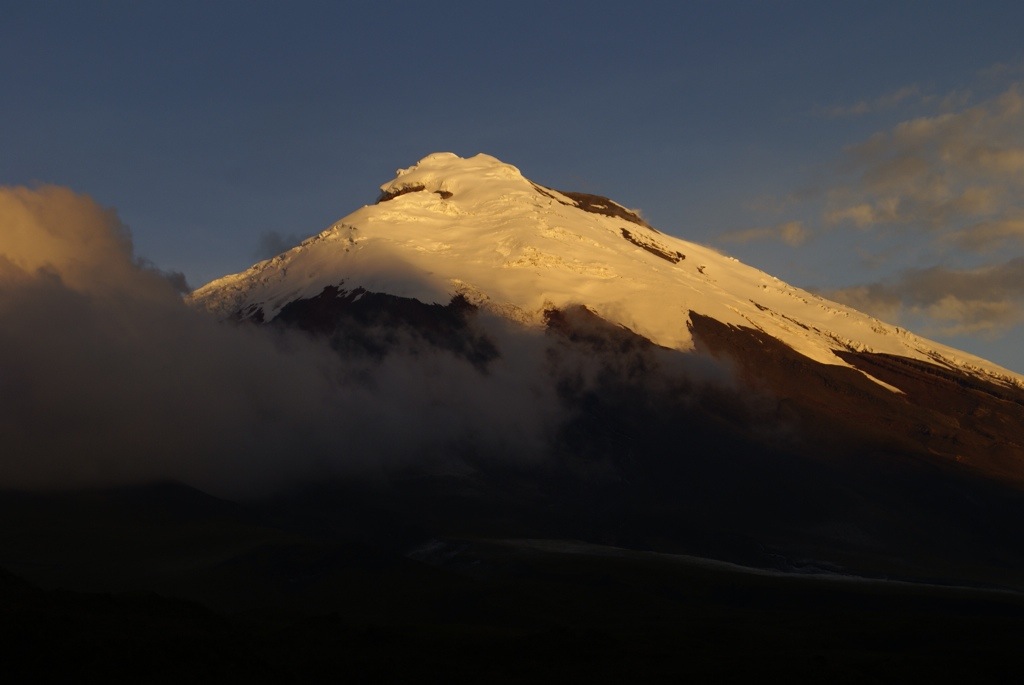 That night it was clear and in the cold night air we were able to see the stars brilliantly as there was no artificial light to be seen. We were again fortunate to wake up to beautiful clear sky. Although by eight o'clock the clouds had started to roll in. Just as we were about to leave the French family that we have bumped into a number of times turned up. We had a good chat with them before heading off into Quito.
That night it was clear and in the cold night air we were able to see the stars brilliantly as there was no artificial light to be seen. We were again fortunate to wake up to beautiful clear sky. Although by eight o'clock the clouds had started to roll in. Just as we were about to leave the French family that we have bumped into a number of times turned up. We had a good chat with them before heading off into Quito.
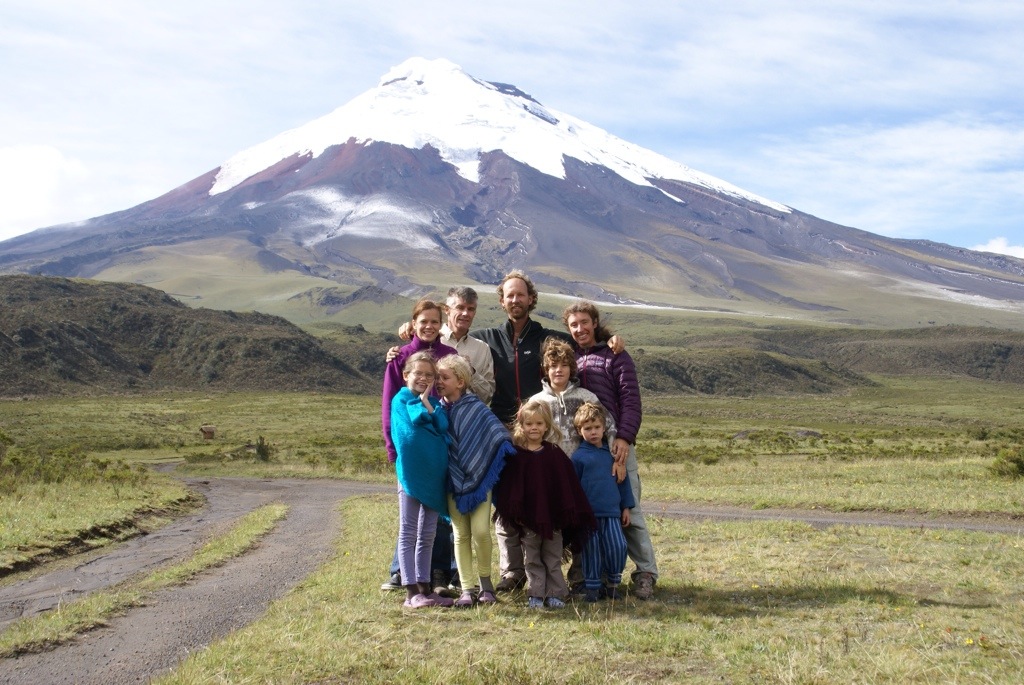
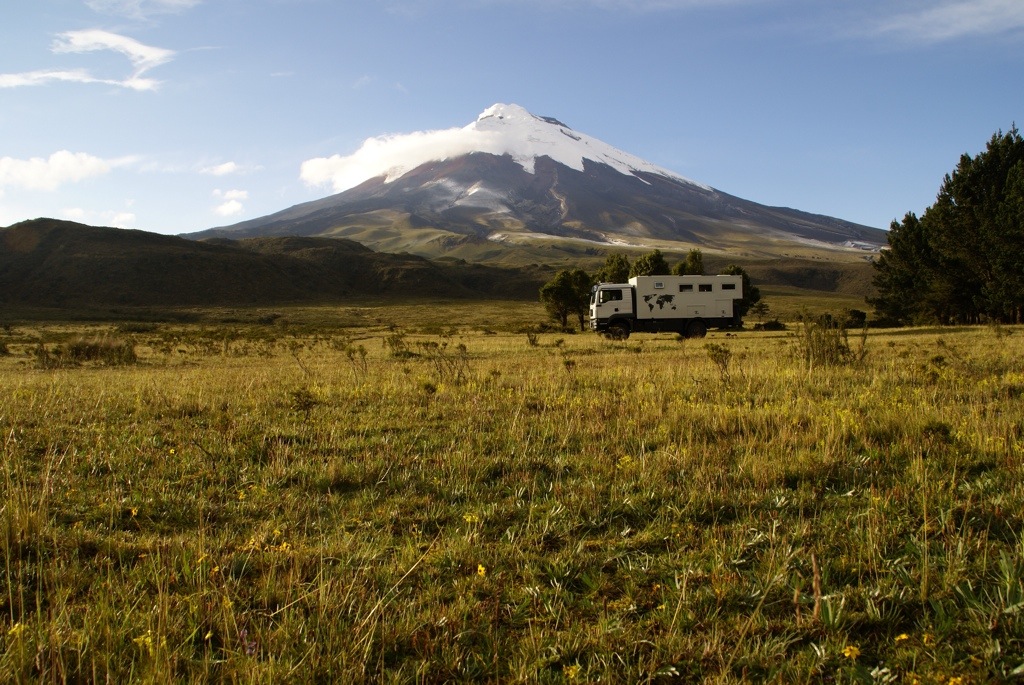 Driving into big cities is never much fun and we were a little worried about driving into Quito as we only had a vague idea of where we were going to park and it was right in the middle of the modern, well off part of the city. When we turned up at the parking place we were too big but the helpful parking attendant said there was another place we could park nearby in between the Marriott and McDonald's. This was a great find as the location was fantastic and even though we were on a main road as they put us at the back of the car park it was pretty quiet.
We spent the afternoon wandering round shopping centres and catching up on things. We were surprised at how modern Quito felt and it had all the amenities you would expect of a modern city. We went into Mariscal Sucre which was an area full of bars playing loud music and was surprised at how busy it was at 6.30 on a Thursday. We think it must have been end of term for the University students. We decided against eating there as it was too noisy and instead settled for a nice Ecuadorian meal of lamb stew at one of the local restaurants.
The next day we caught a taxi into the old town. Quito is set in a bowl and surrounded by hills but even in the city the roads go up and down. We spent the day walking around the lovely plazas, seeing churches and monasteries and the other sights.
Driving into big cities is never much fun and we were a little worried about driving into Quito as we only had a vague idea of where we were going to park and it was right in the middle of the modern, well off part of the city. When we turned up at the parking place we were too big but the helpful parking attendant said there was another place we could park nearby in between the Marriott and McDonald's. This was a great find as the location was fantastic and even though we were on a main road as they put us at the back of the car park it was pretty quiet.
We spent the afternoon wandering round shopping centres and catching up on things. We were surprised at how modern Quito felt and it had all the amenities you would expect of a modern city. We went into Mariscal Sucre which was an area full of bars playing loud music and was surprised at how busy it was at 6.30 on a Thursday. We think it must have been end of term for the University students. We decided against eating there as it was too noisy and instead settled for a nice Ecuadorian meal of lamb stew at one of the local restaurants.
The next day we caught a taxi into the old town. Quito is set in a bowl and surrounded by hills but even in the city the roads go up and down. We spent the day walking around the lovely plazas, seeing churches and monasteries and the other sights.
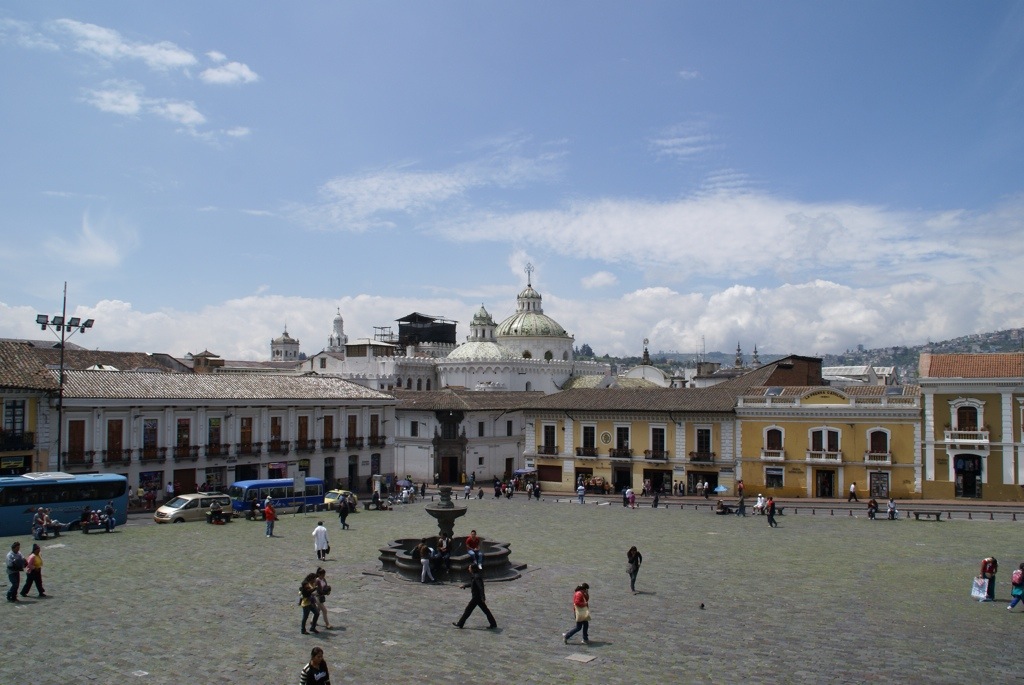
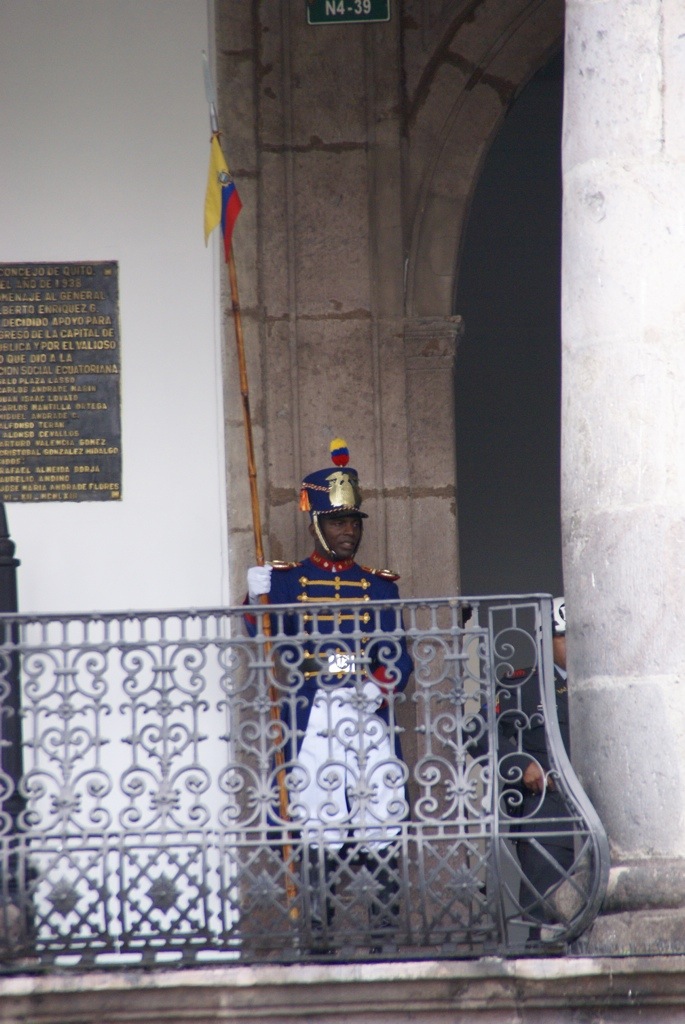
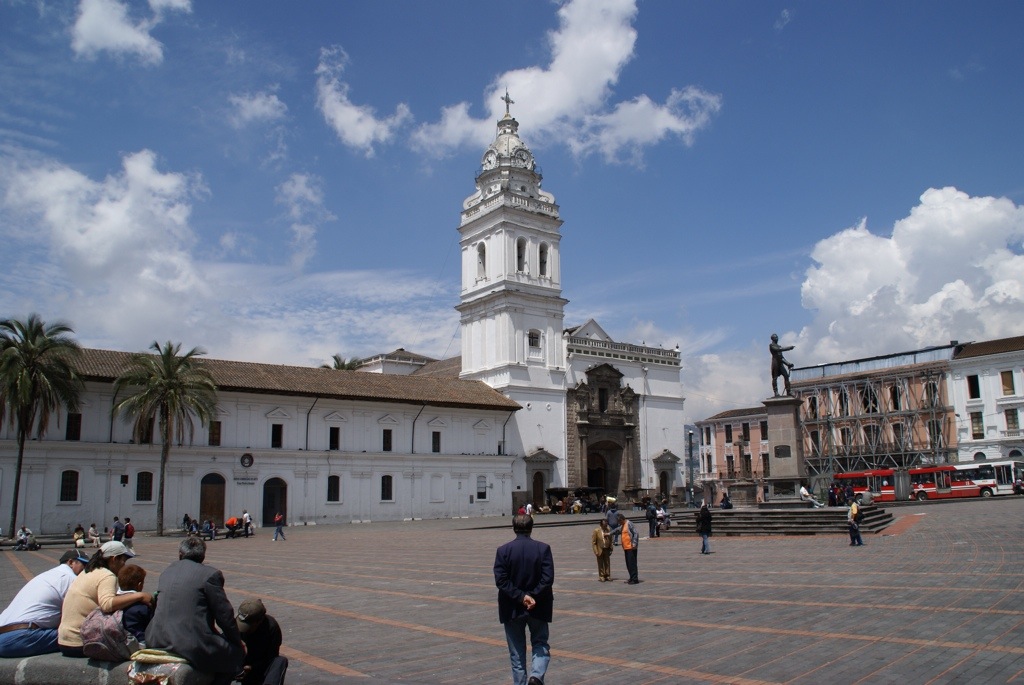
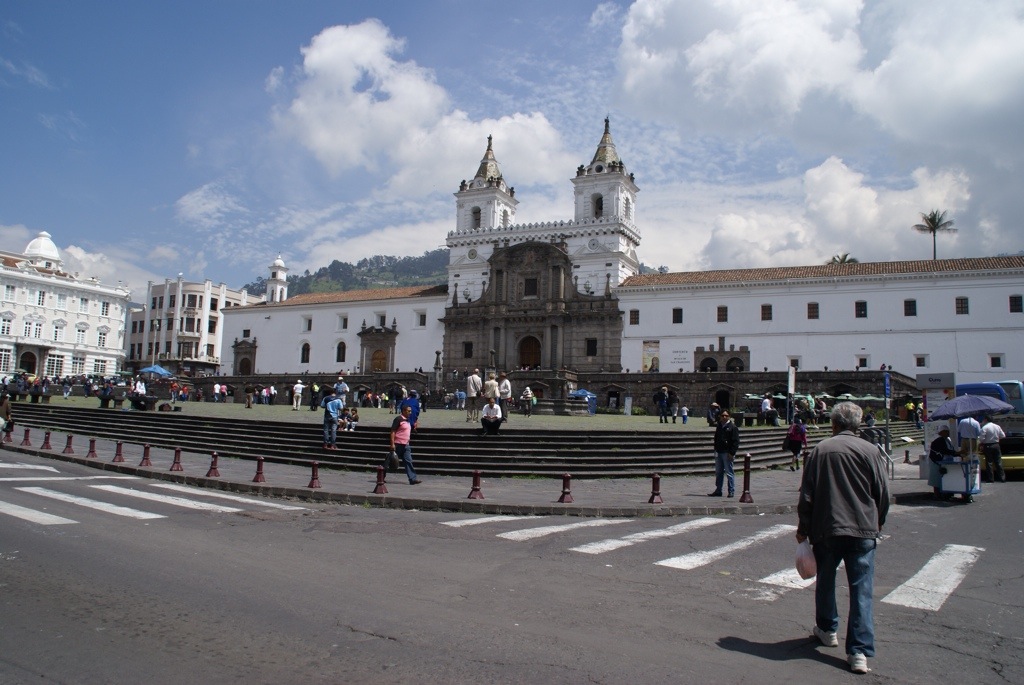 We went into the cathedral on Plaza Grande and could not stop laughing. The floor was covered in floor boards and all of them creaked very loudly when you walked on them. No chance of sneaking in late to mass there without been noticed.
We went into the cathedral on Plaza Grande and could not stop laughing. The floor was covered in floor boards and all of them creaked very loudly when you walked on them. No chance of sneaking in late to mass there without been noticed.
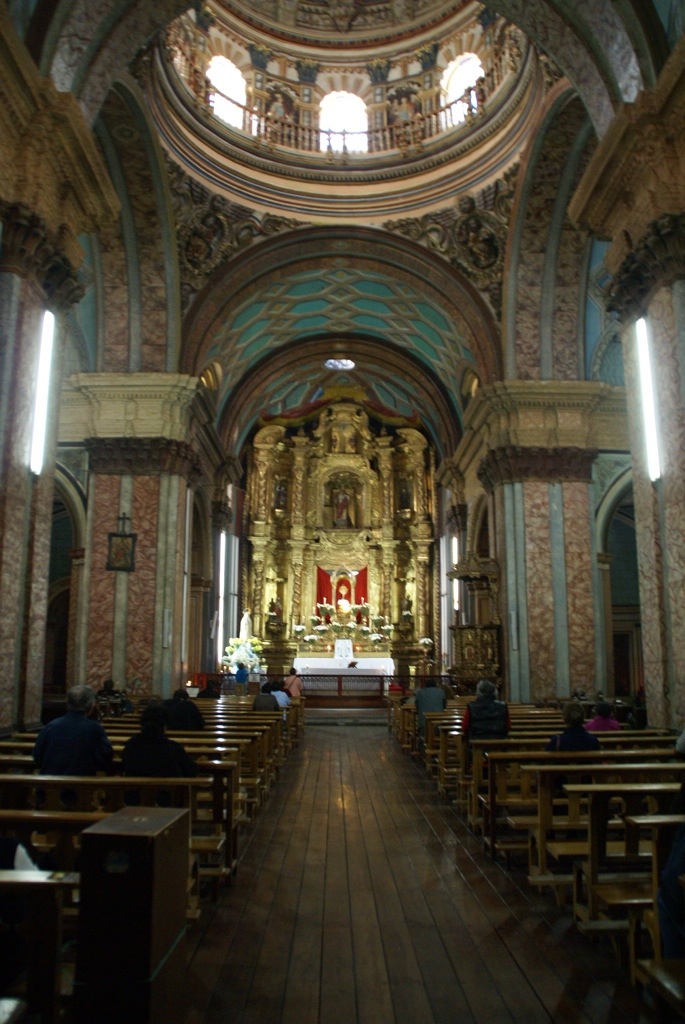 During the nights in Quito it rained really hard and thunder rattled and echoed around the mountains. However on our last morning it was nice and clear so we took the Teleferiqo up the mountain to get some great views over the city.
During the nights in Quito it rained really hard and thunder rattled and echoed around the mountains. However on our last morning it was nice and clear so we took the Teleferiqo up the mountain to get some great views over the city.



























